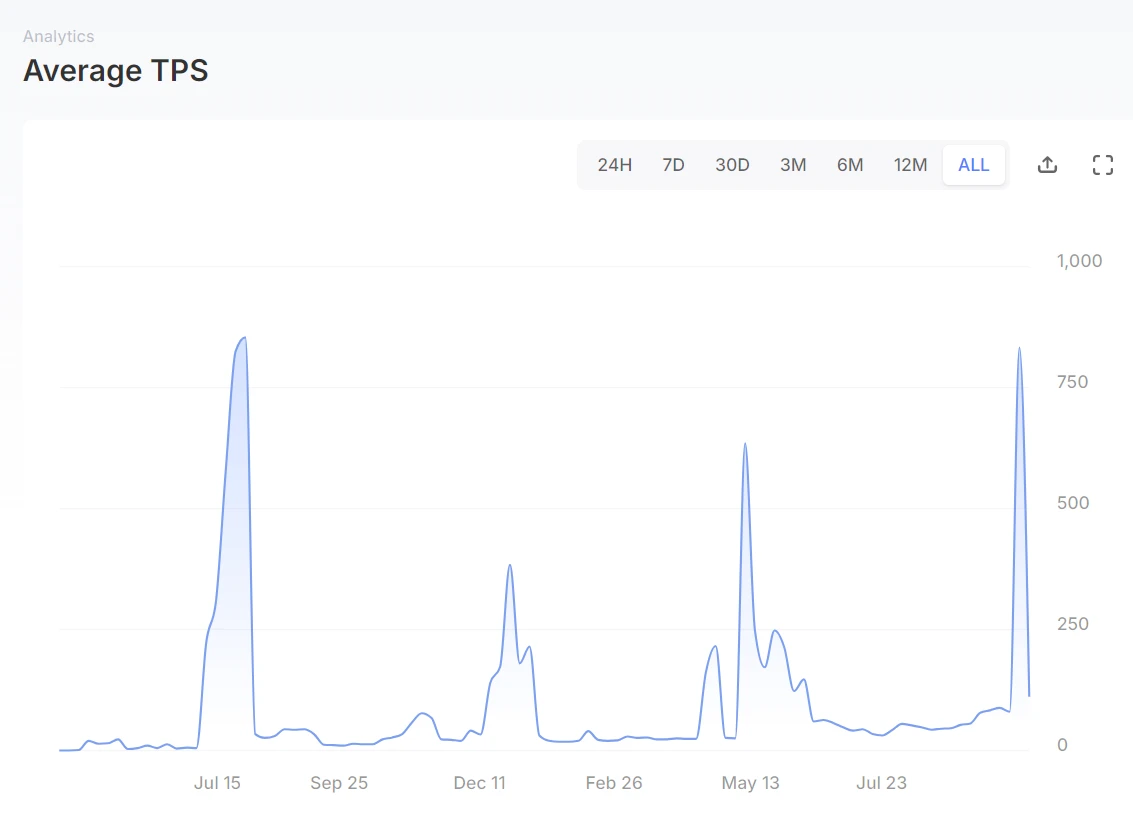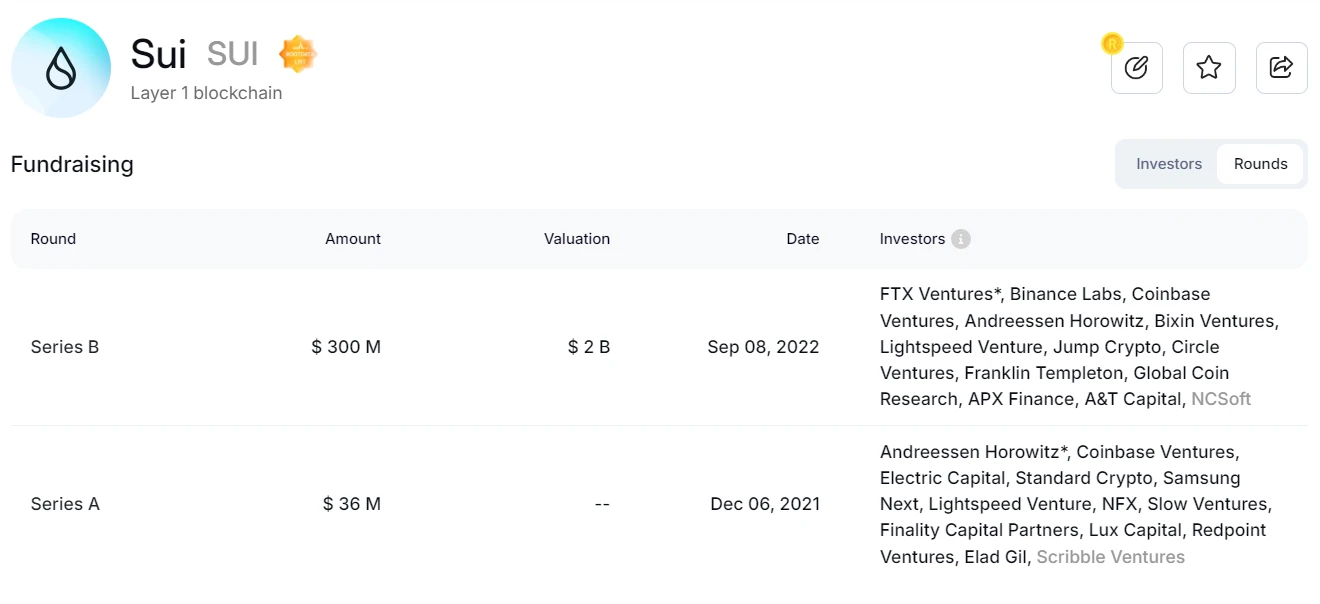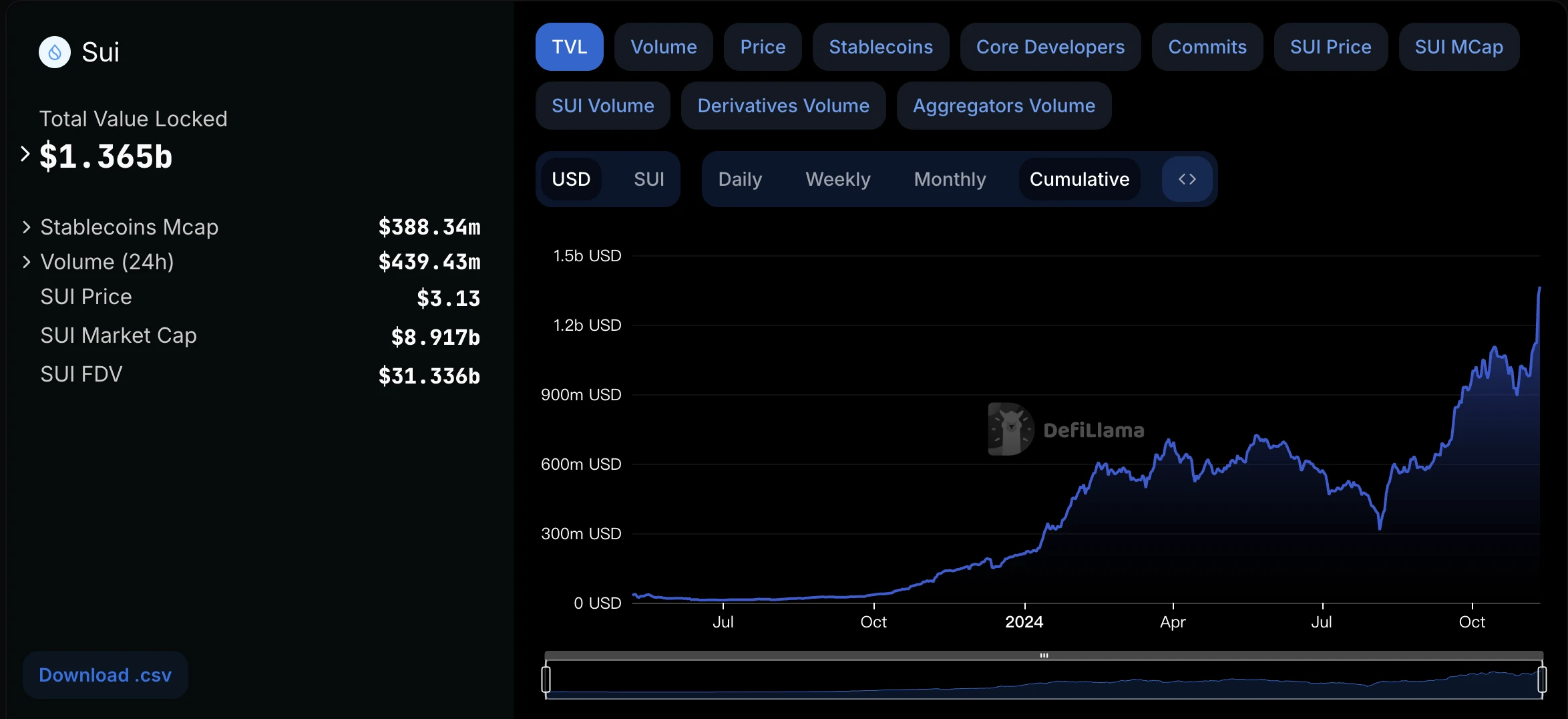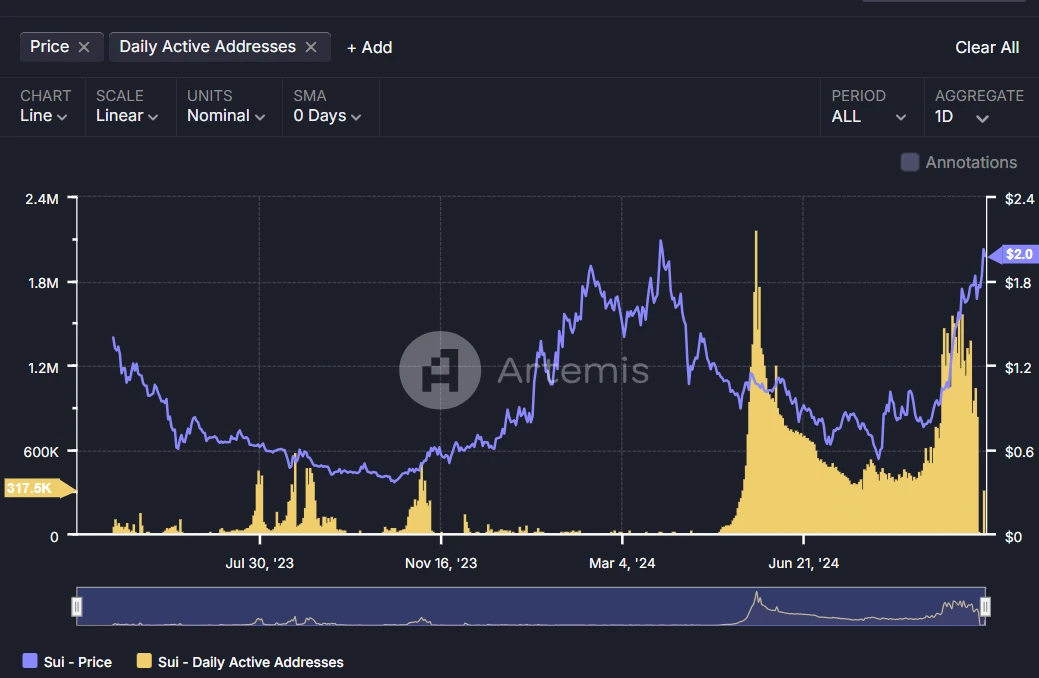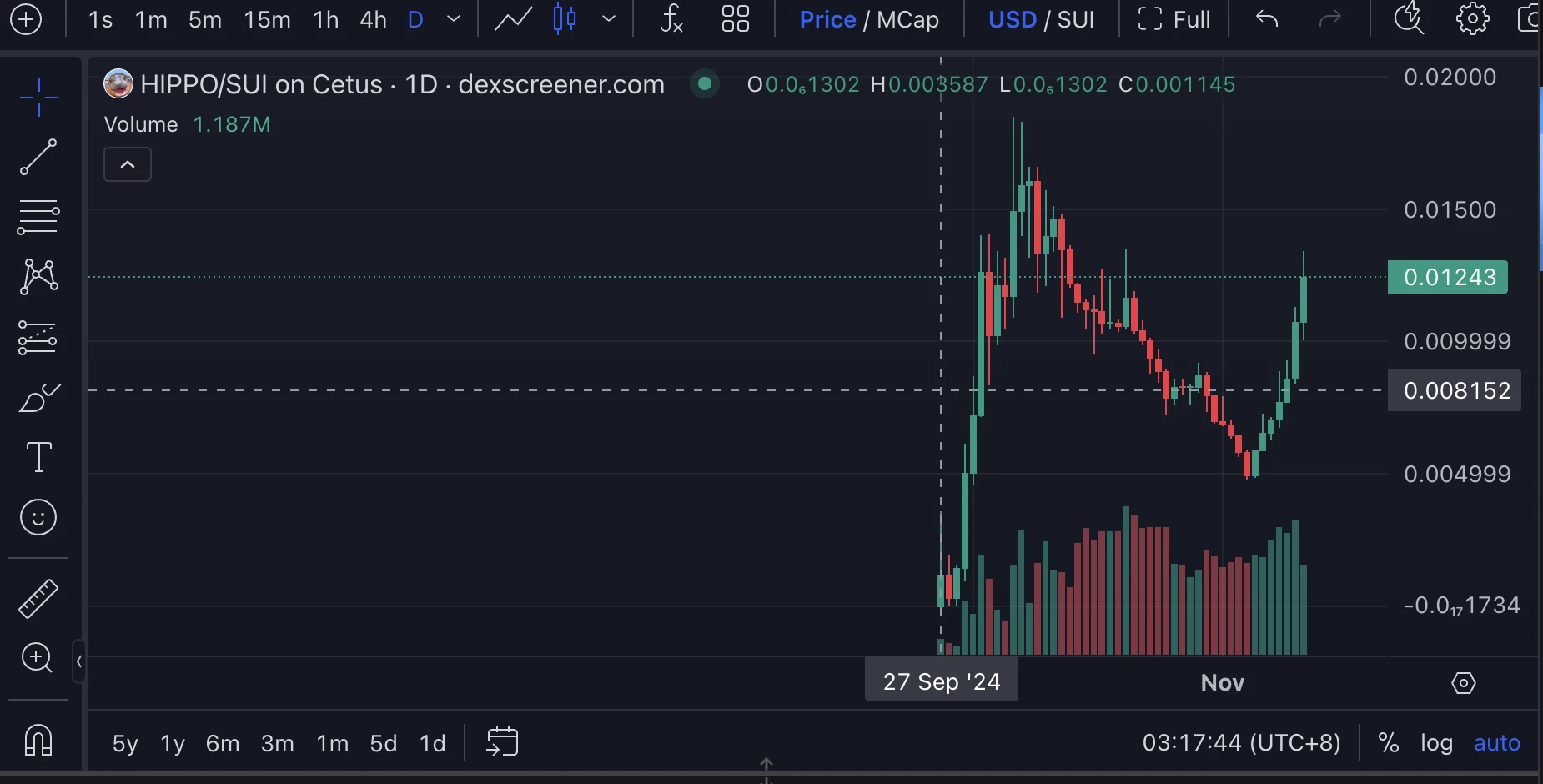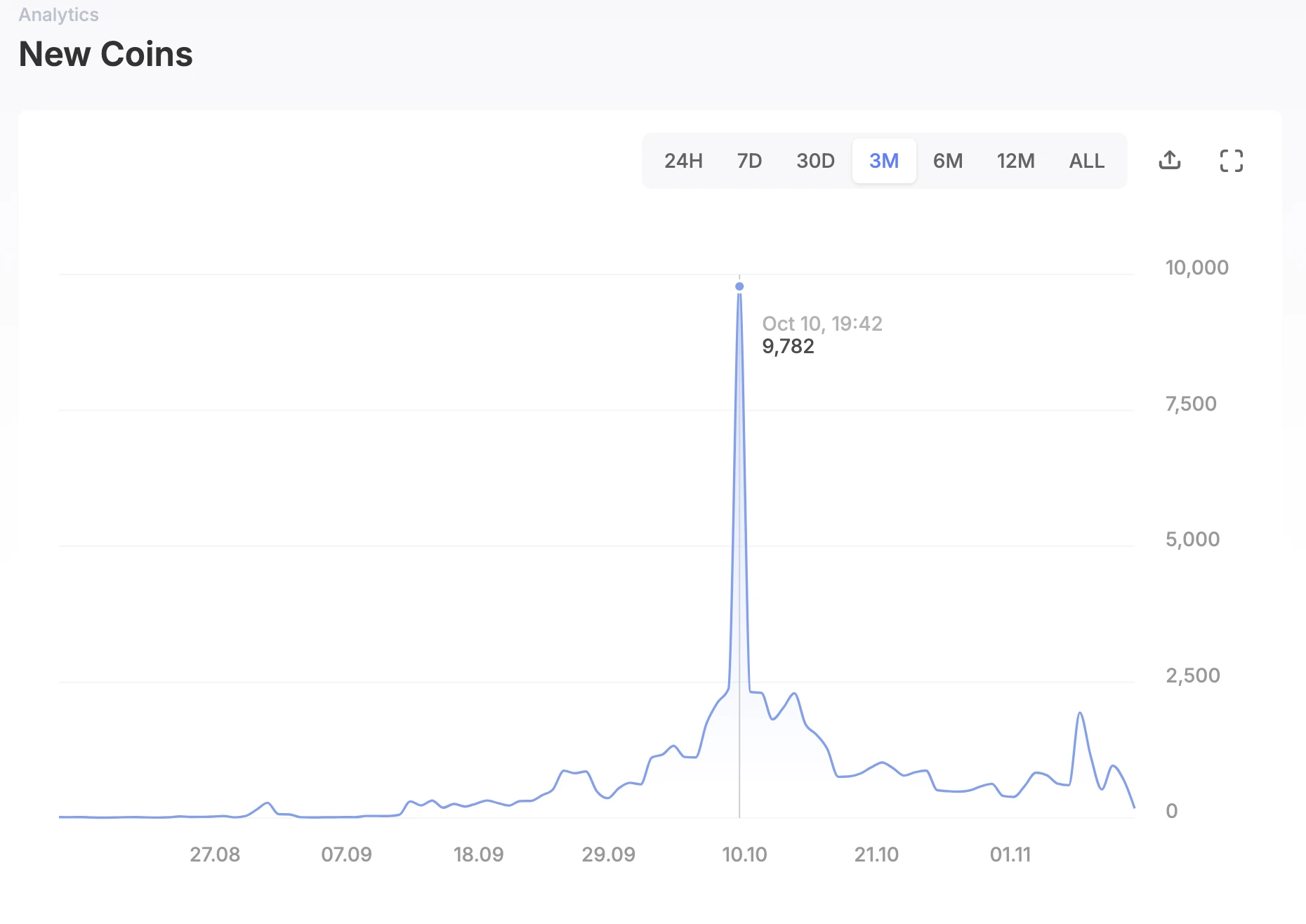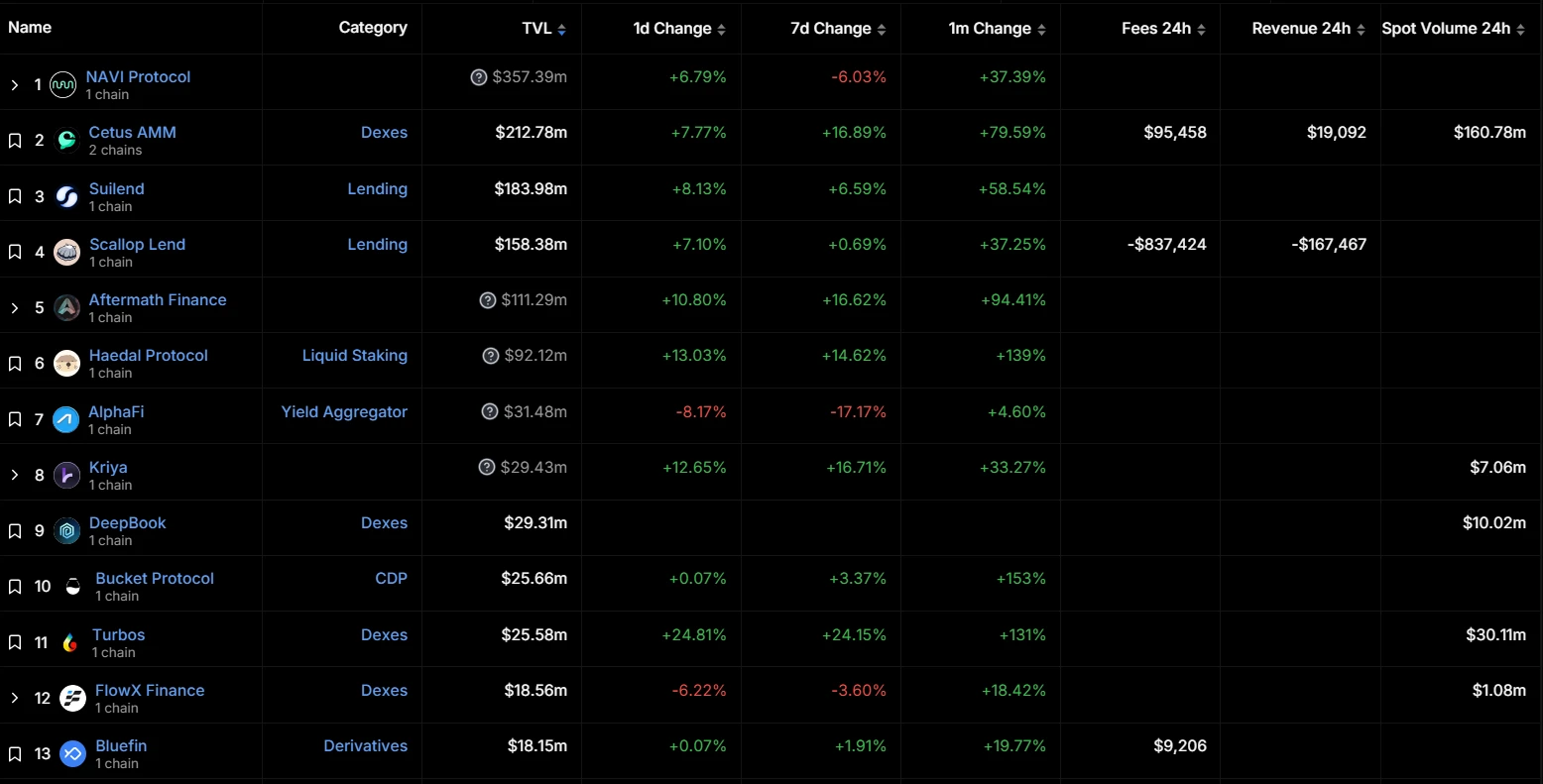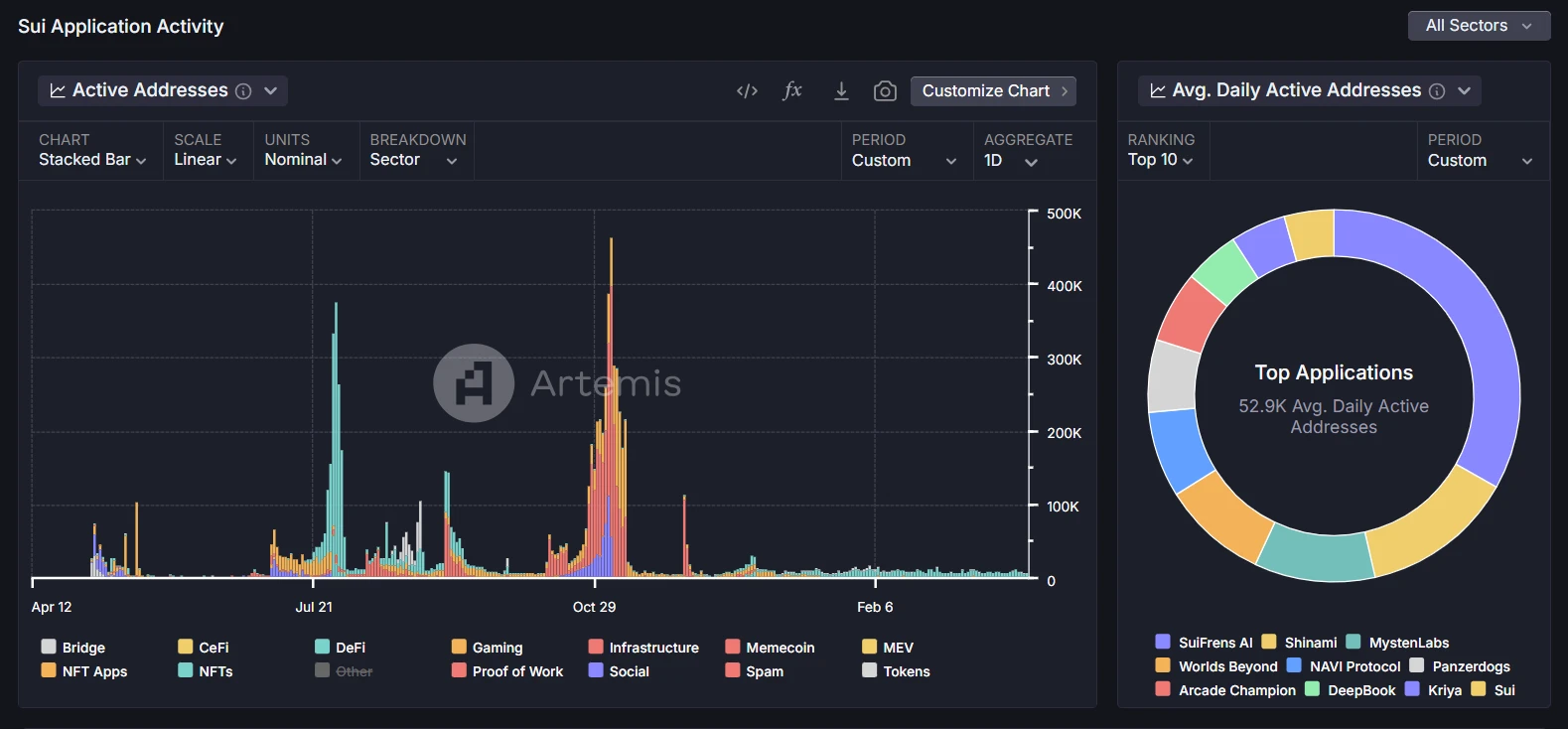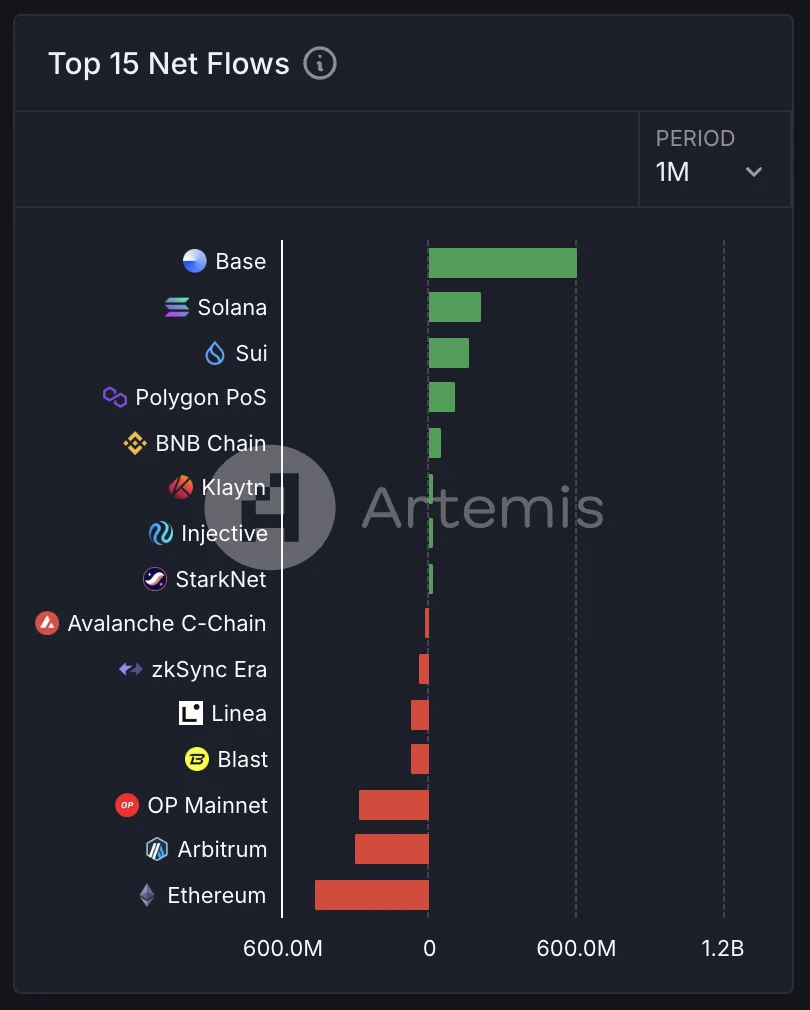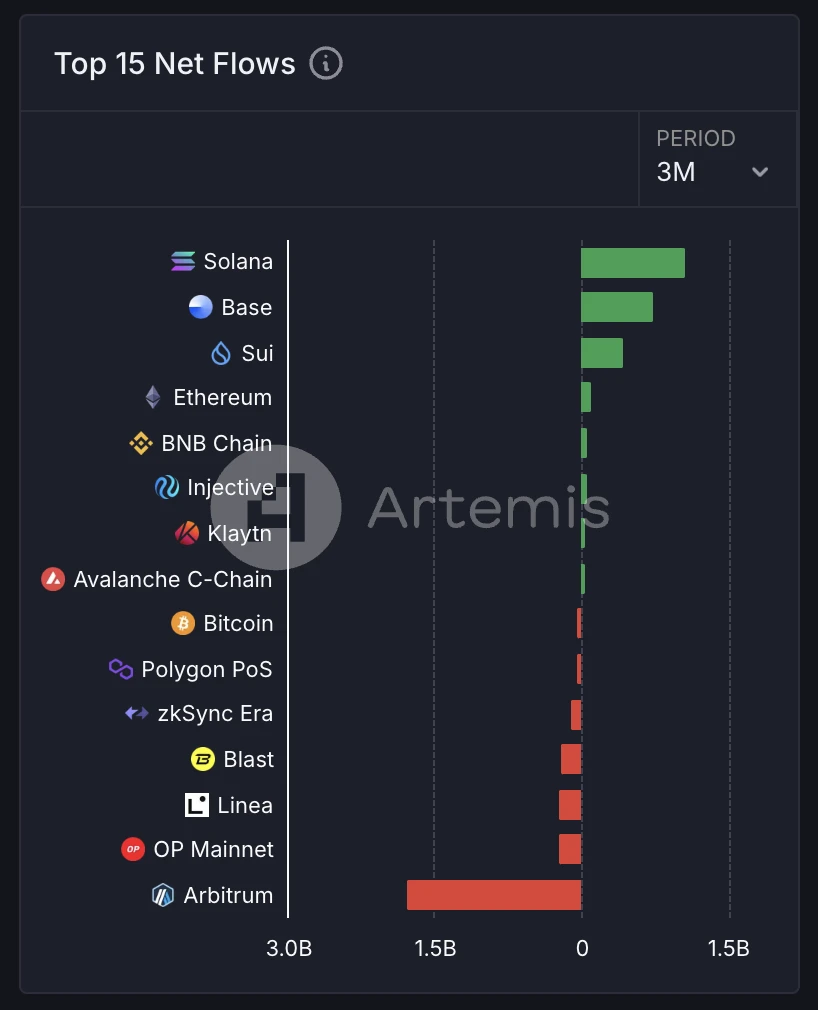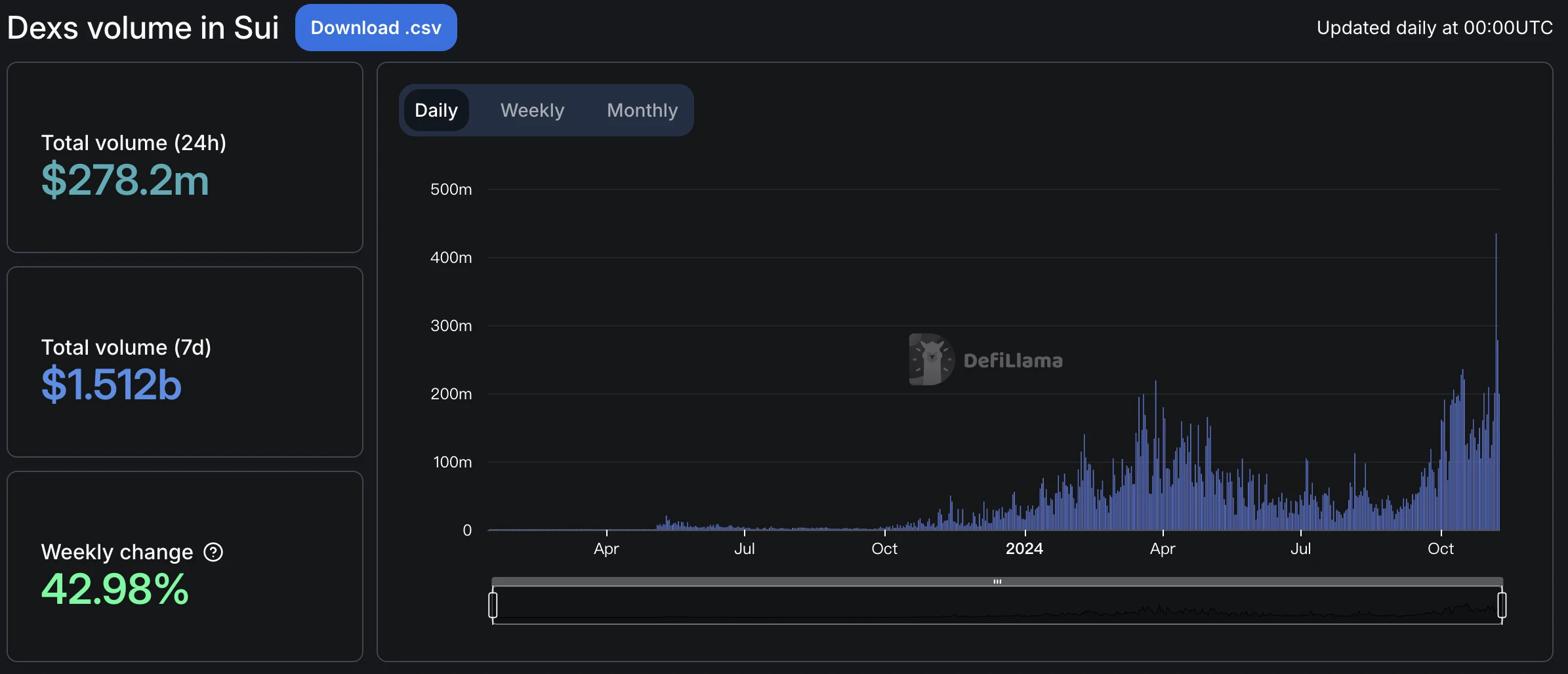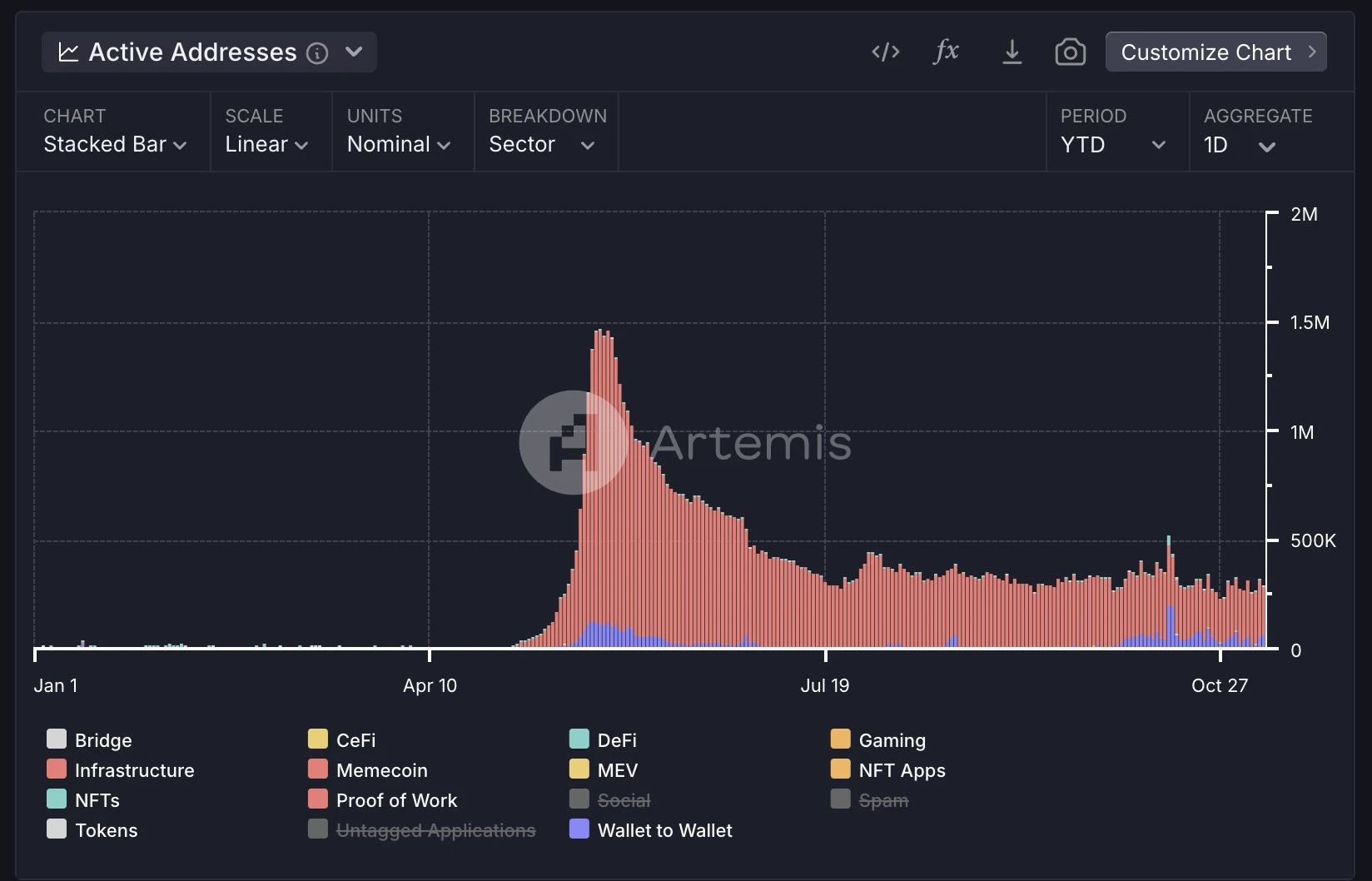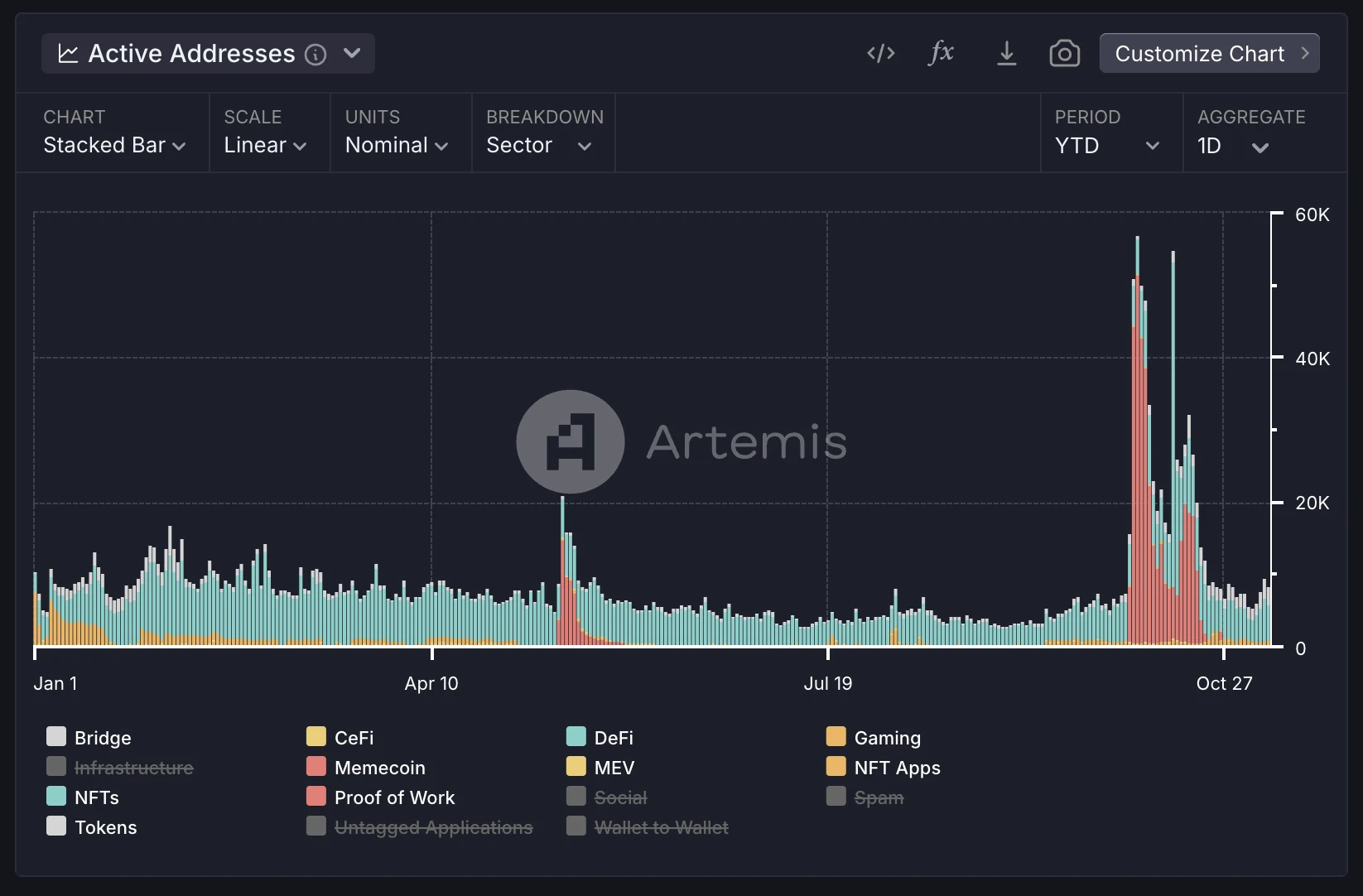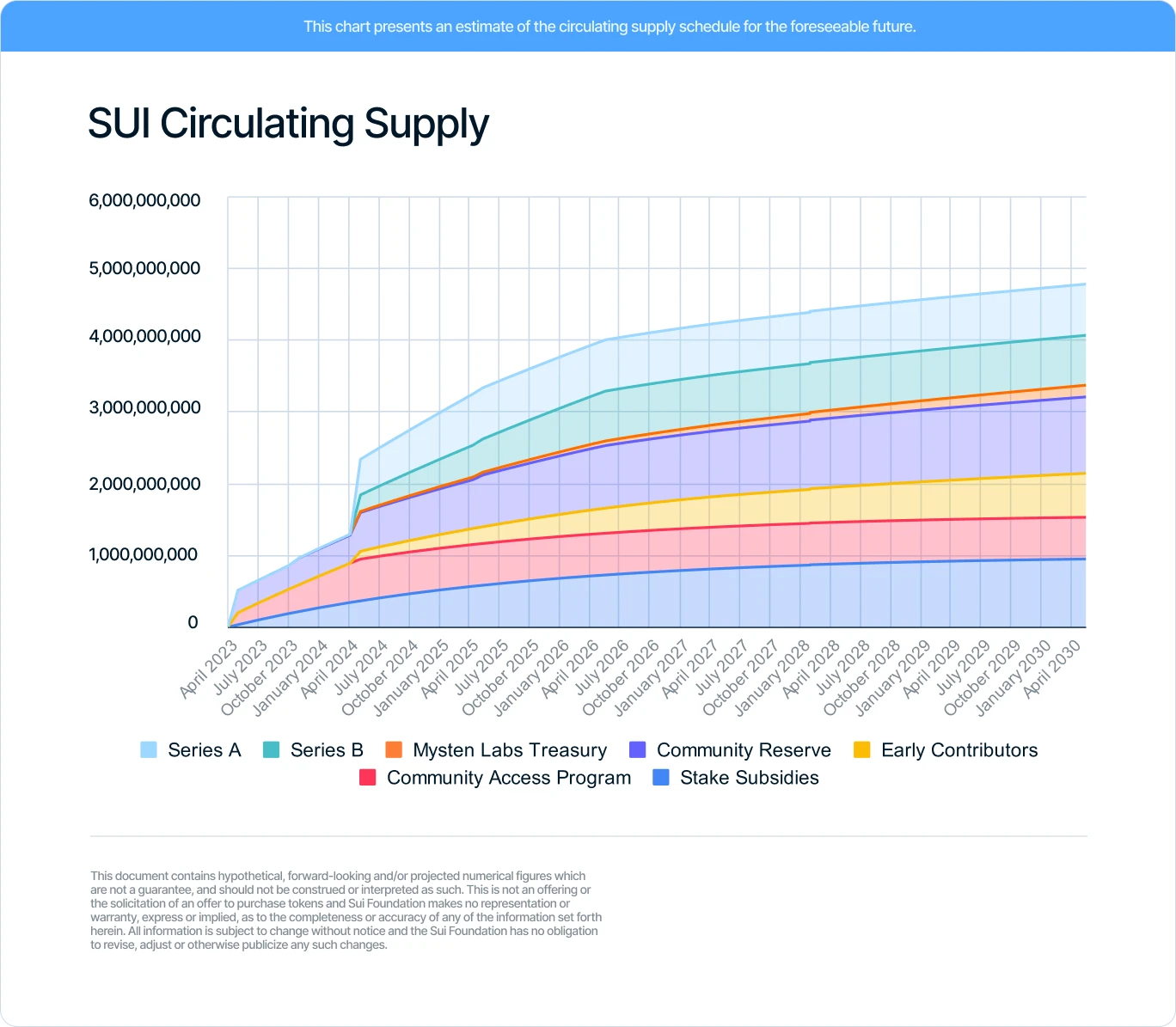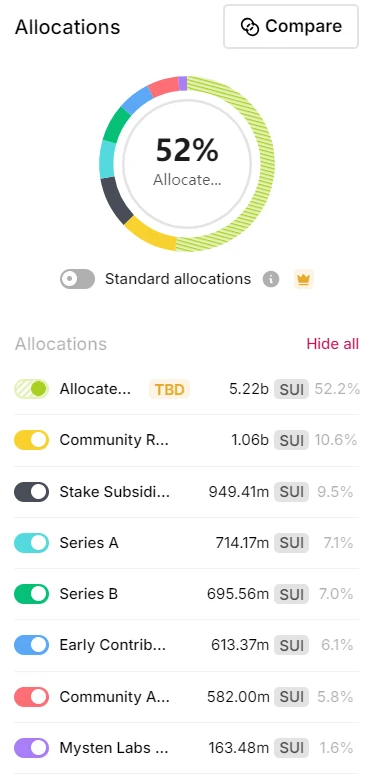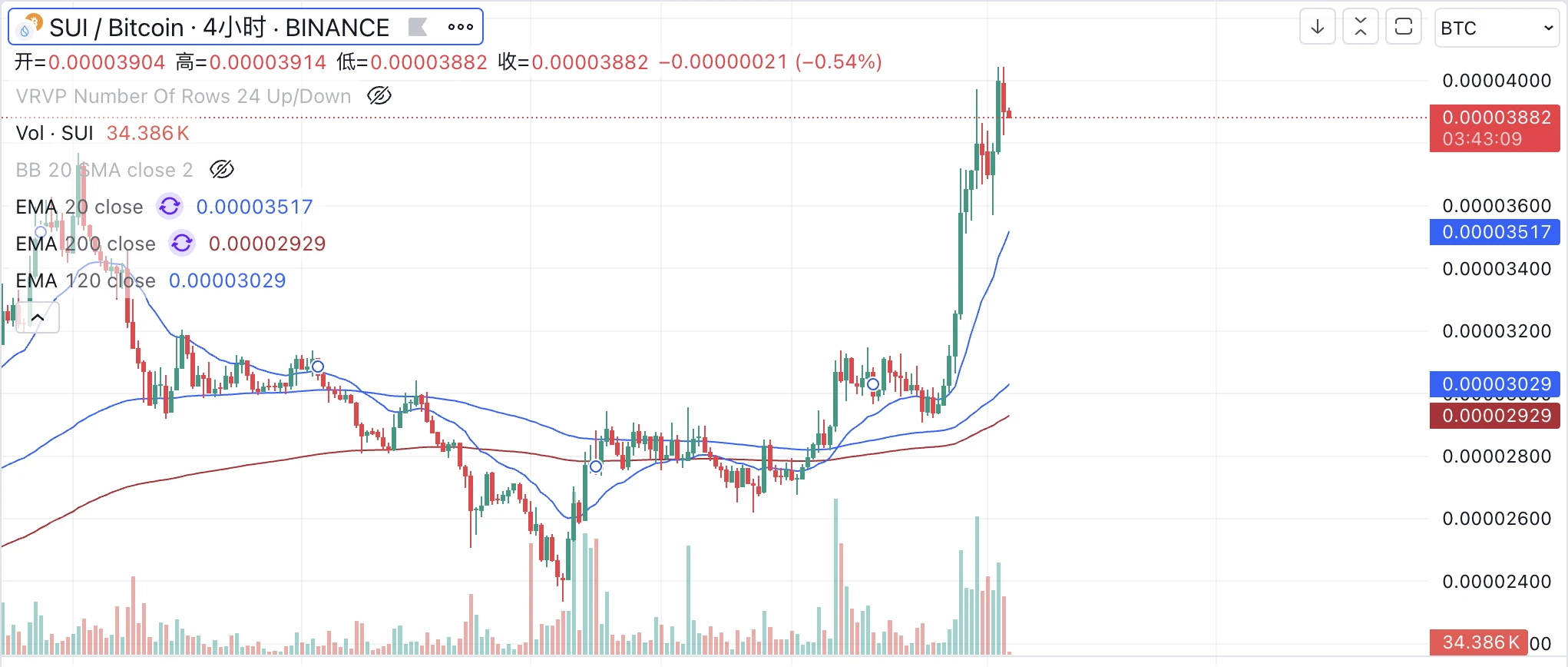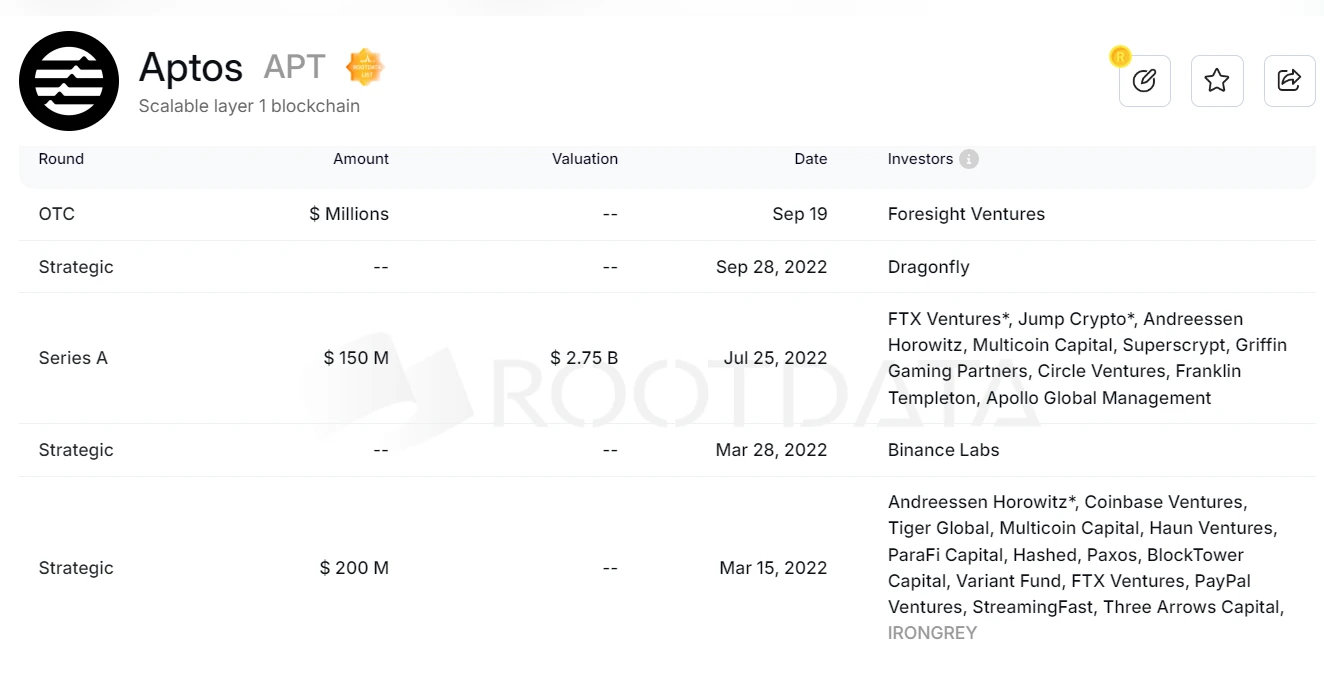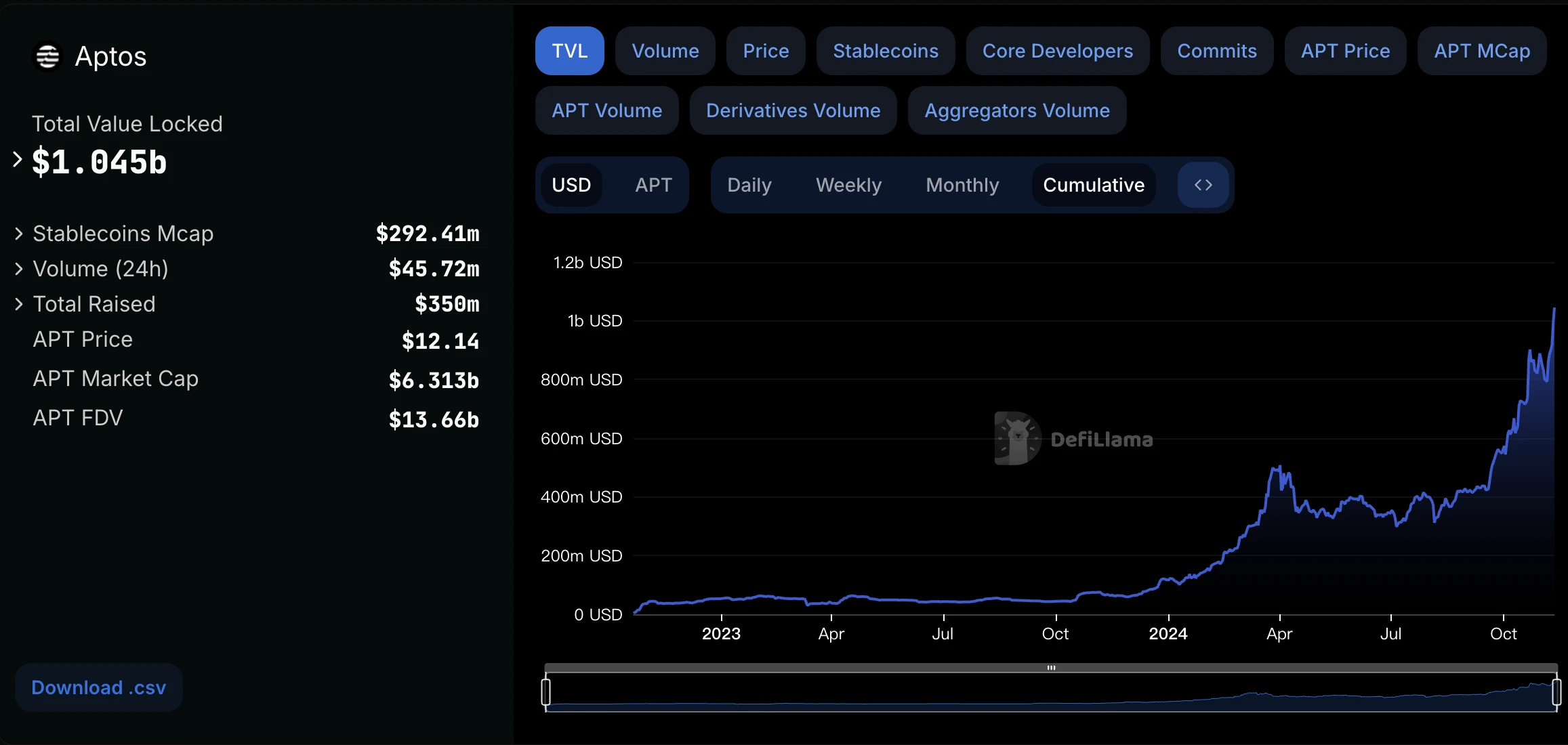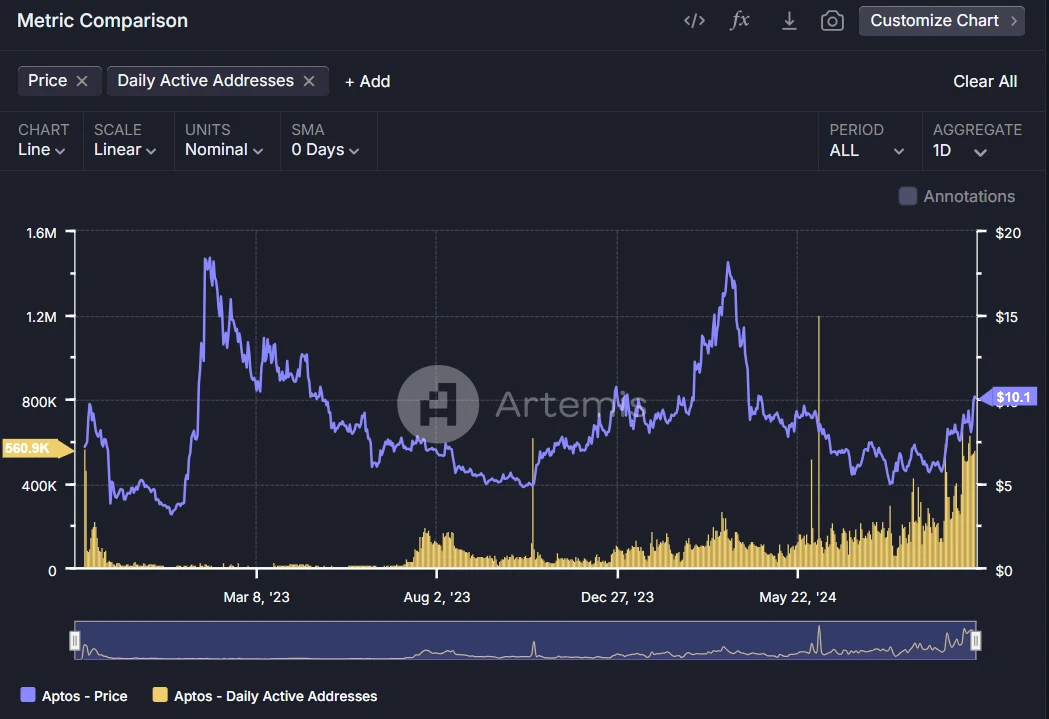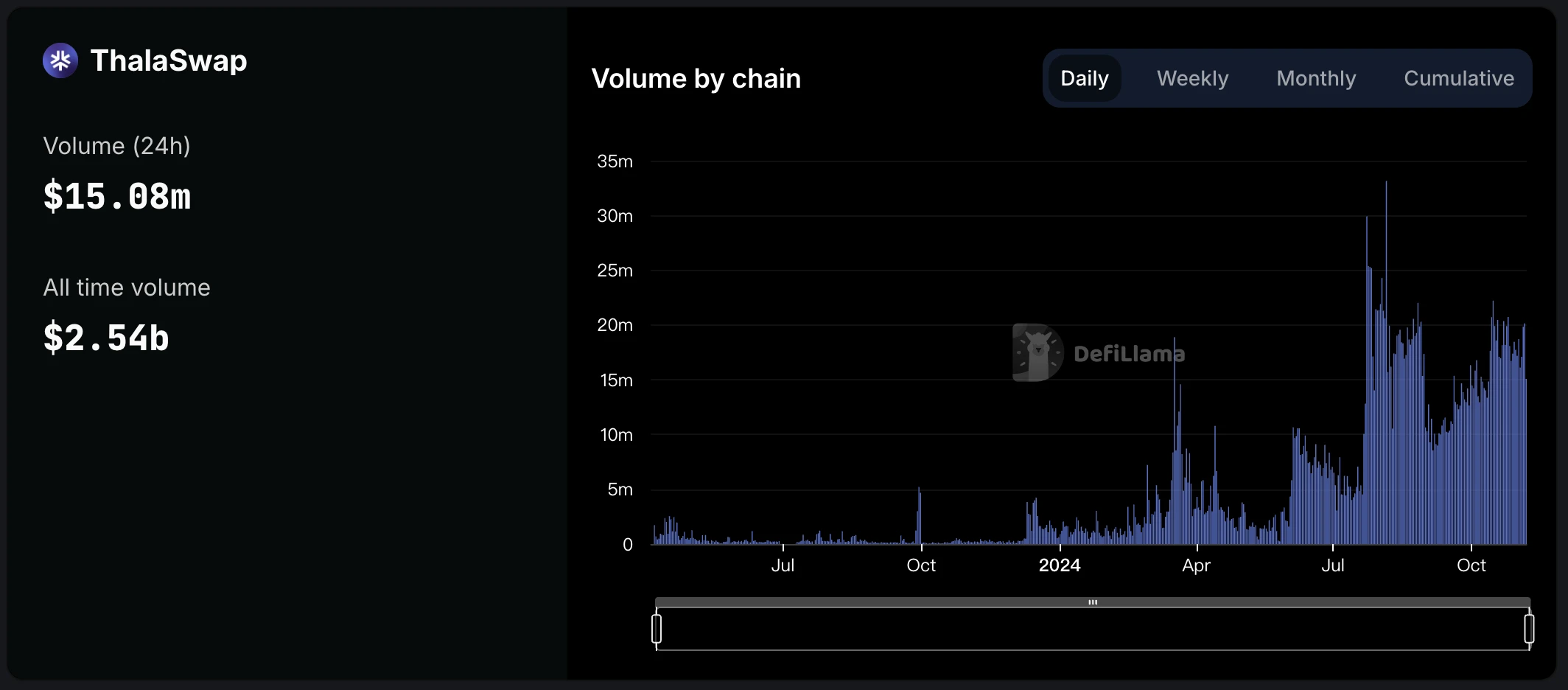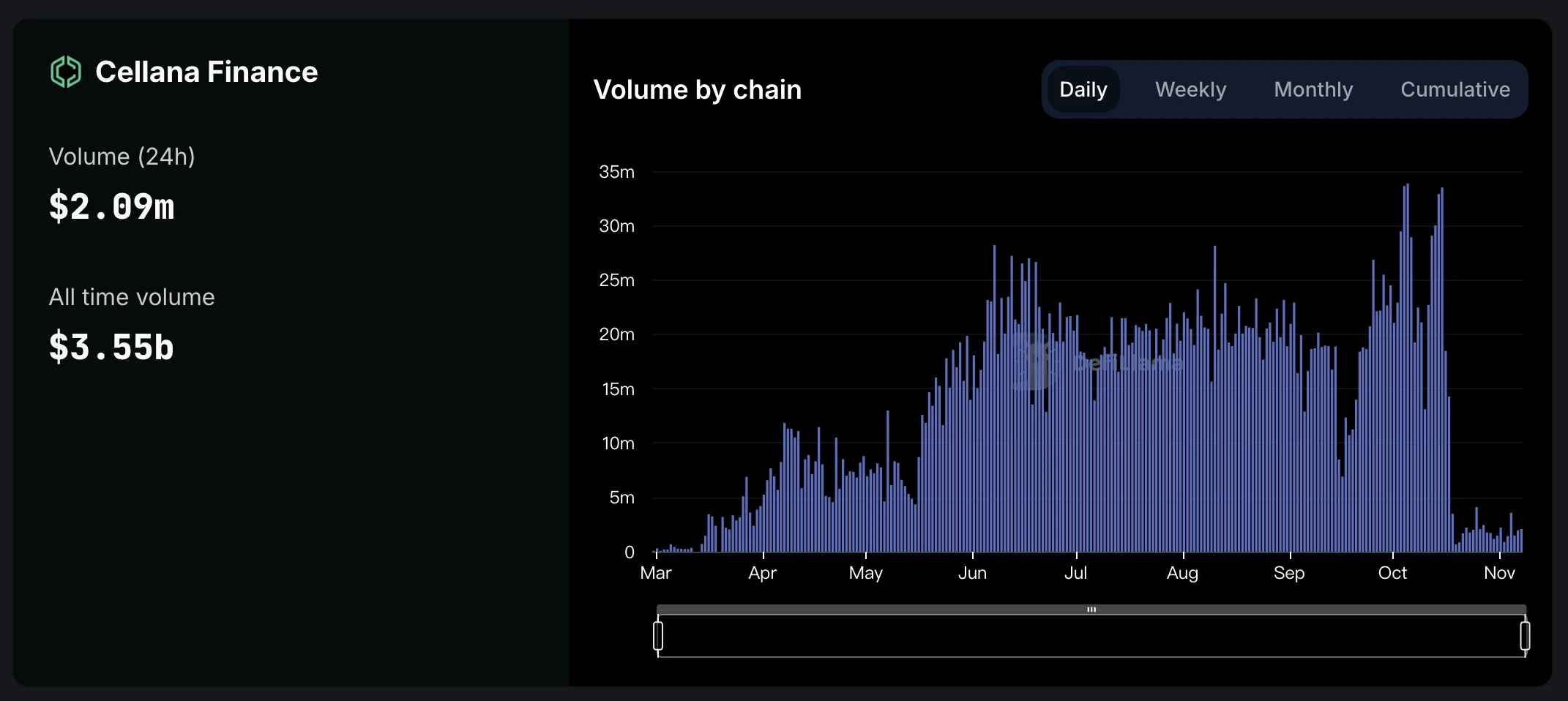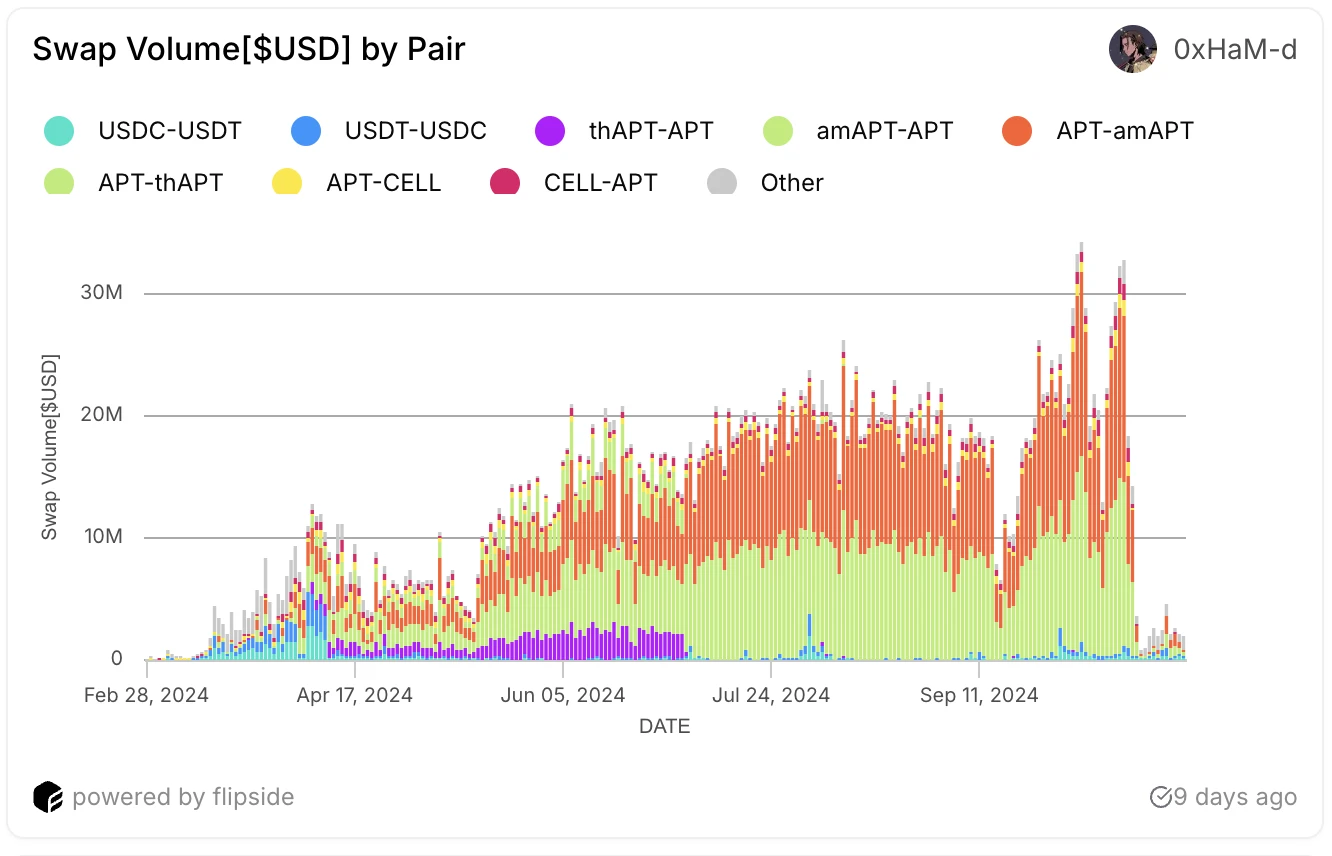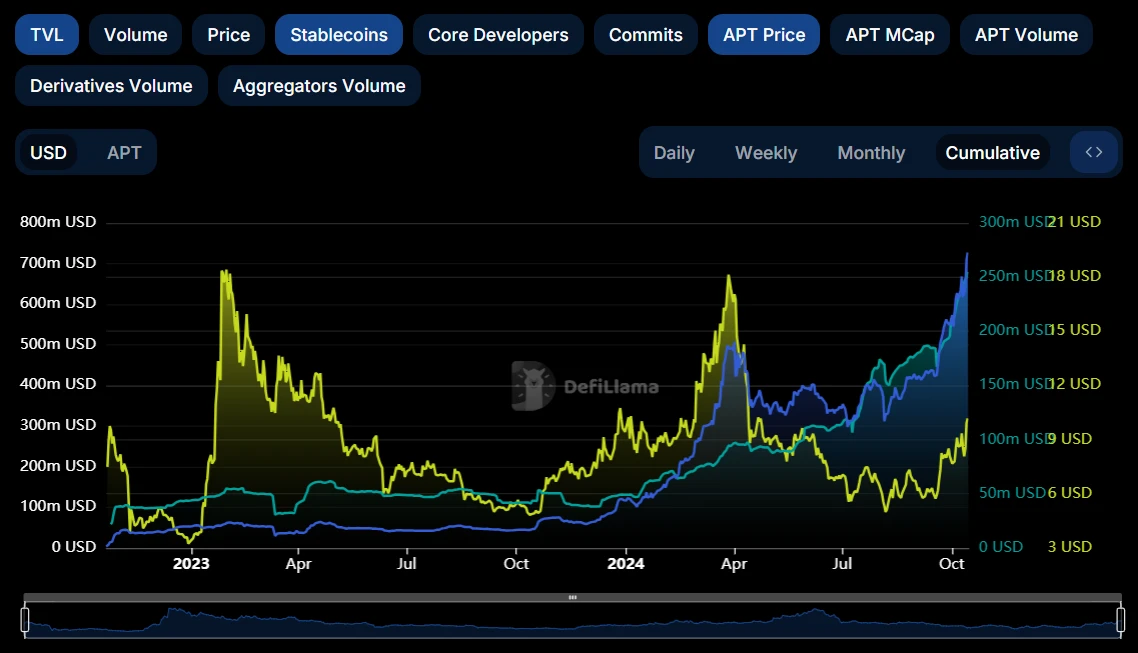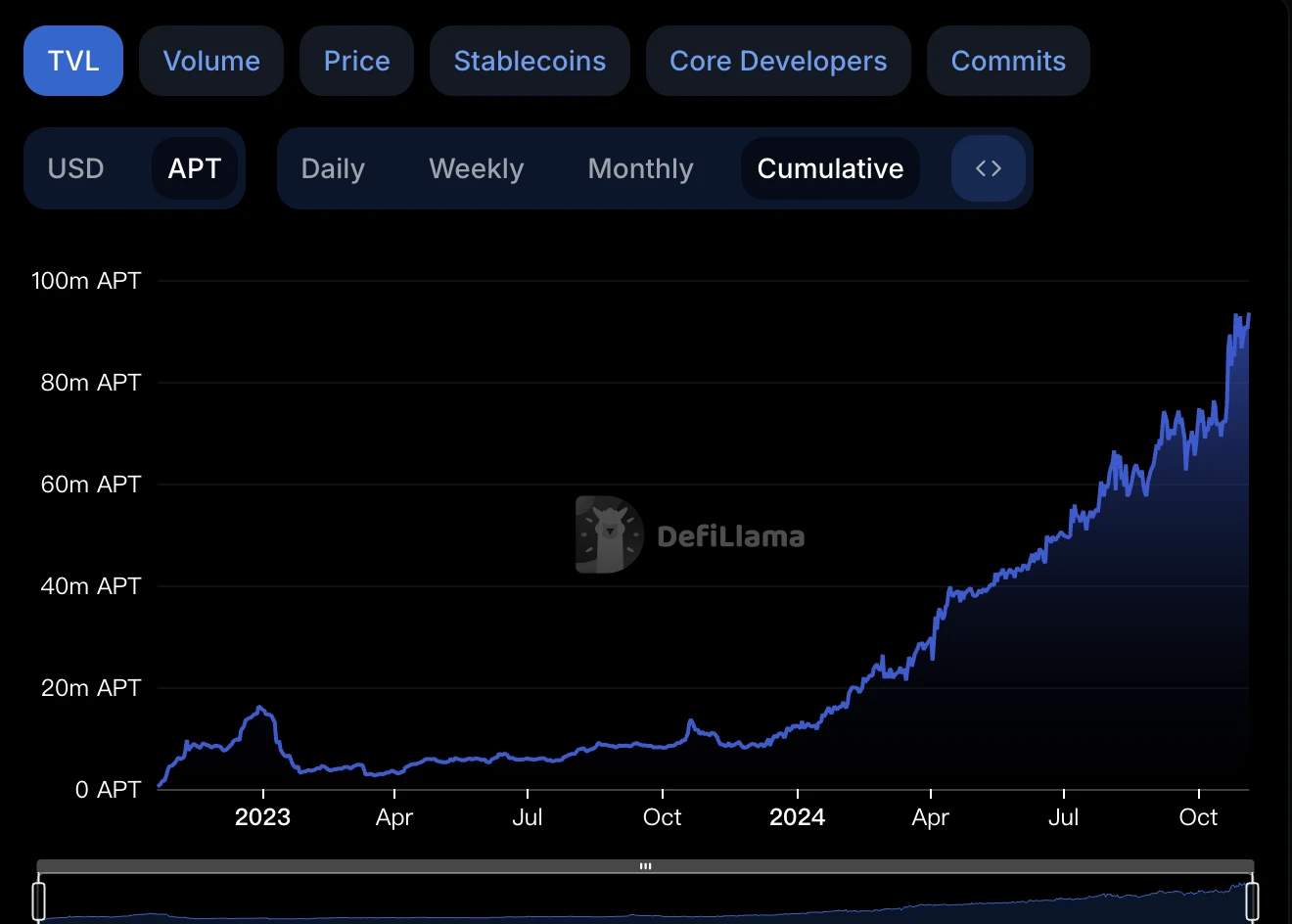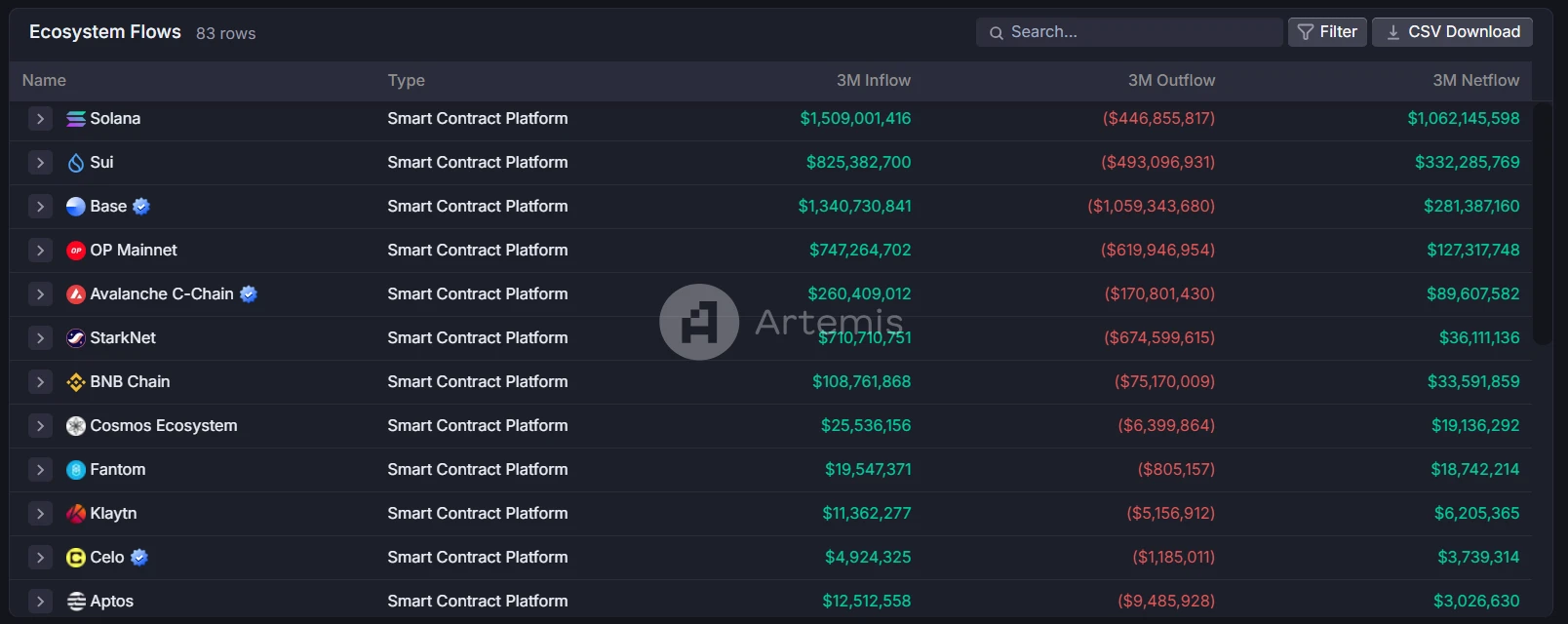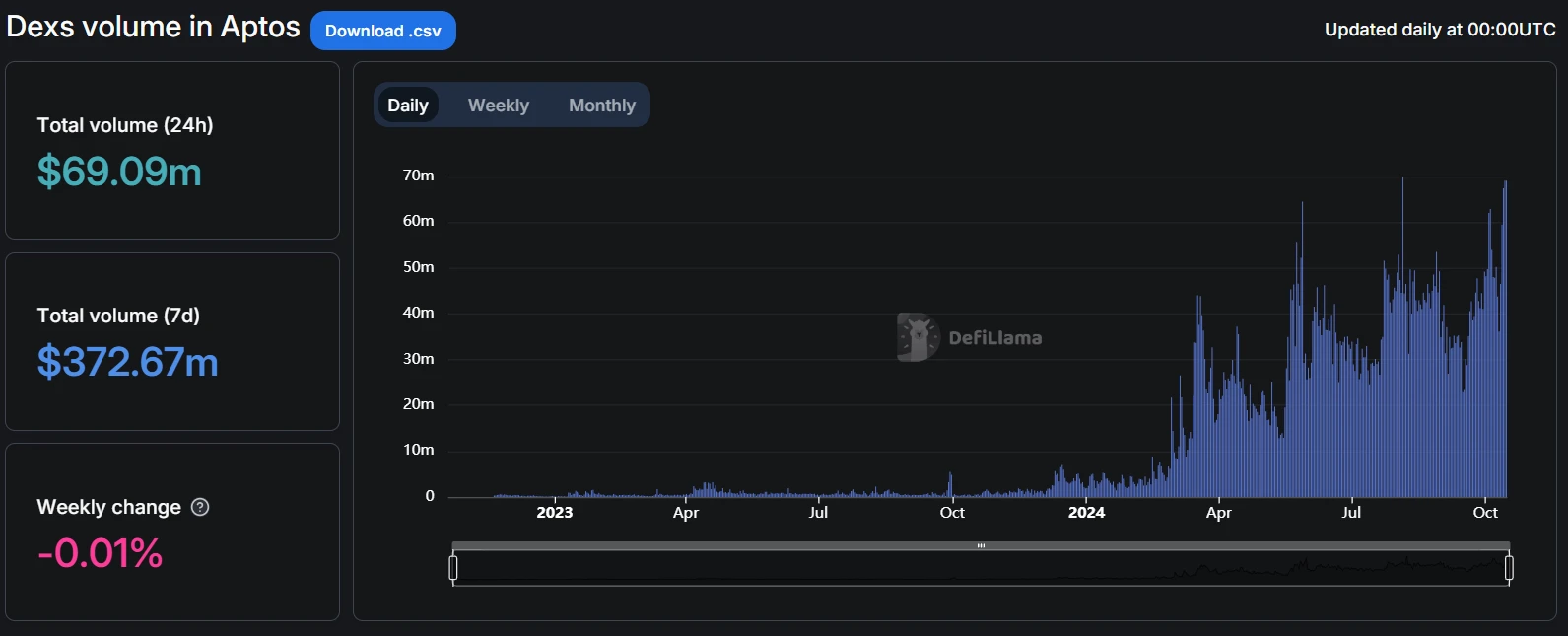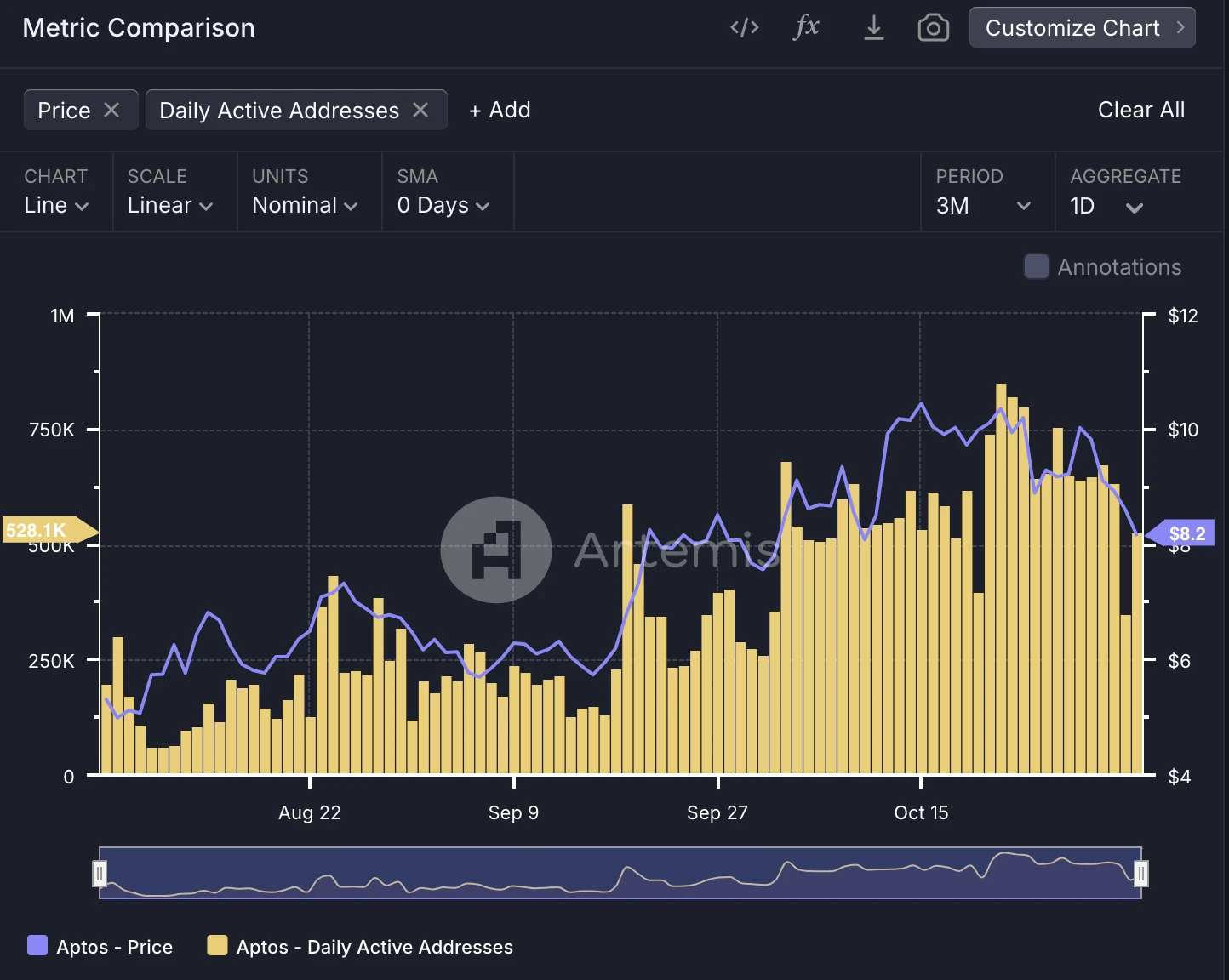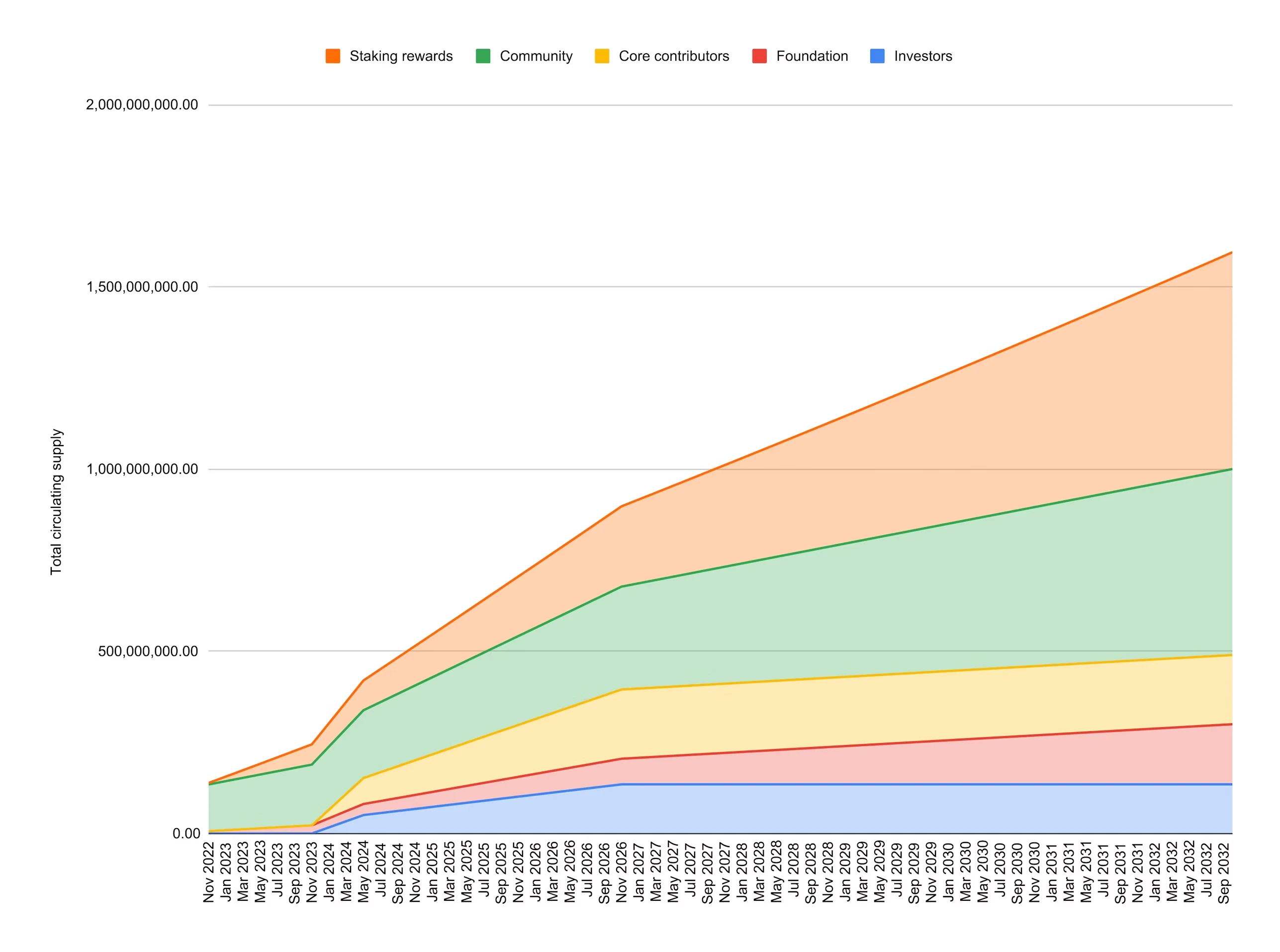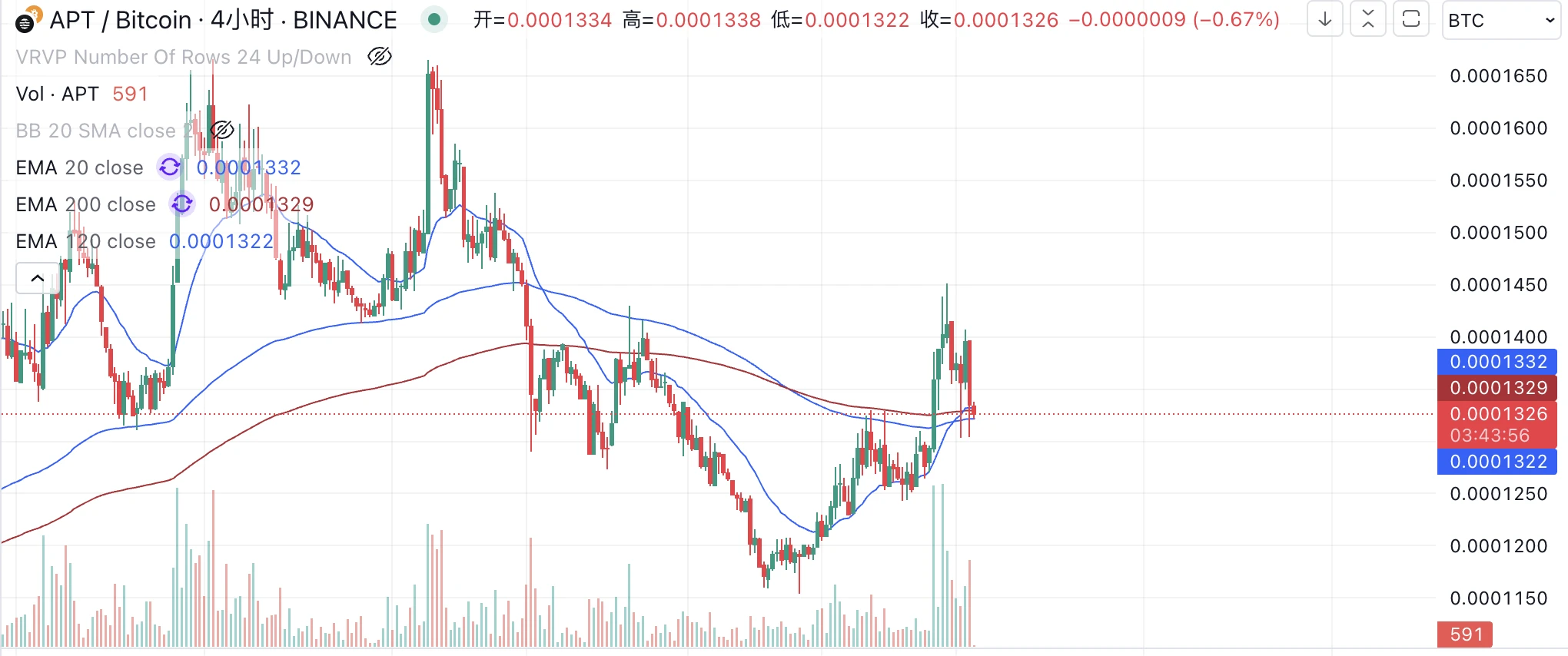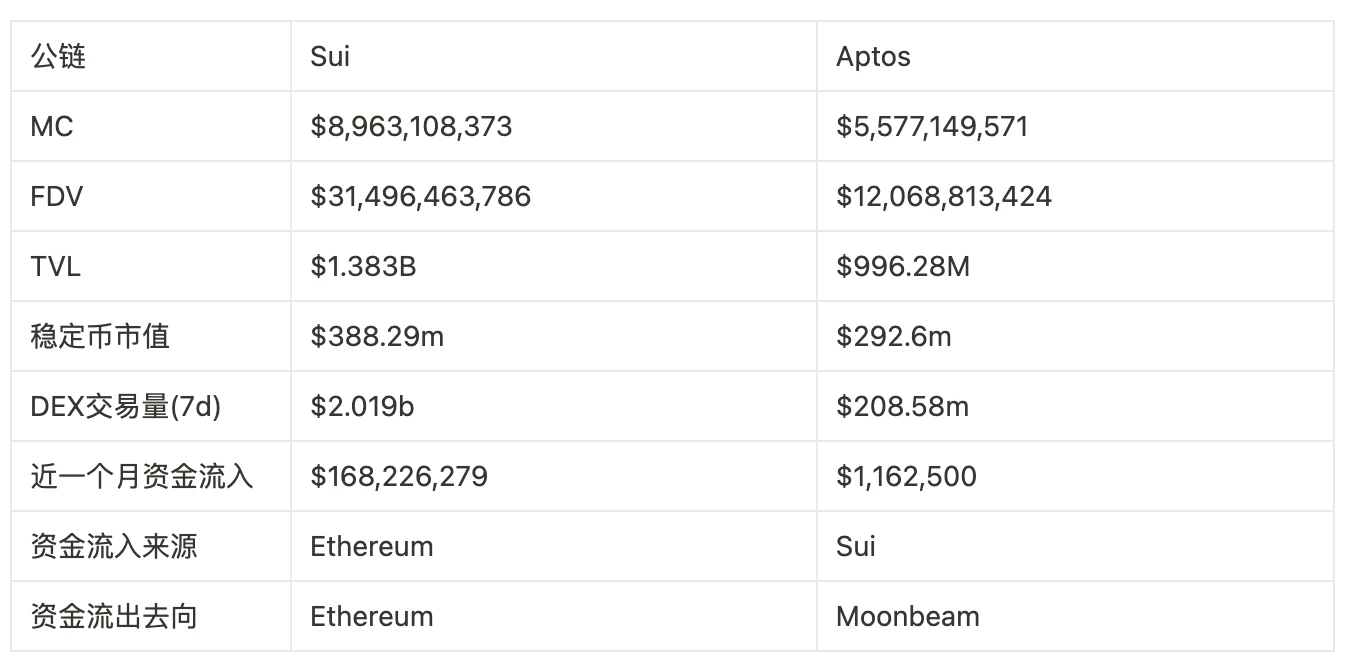Metrics Ventures: Sui vs. Aptos, which public chain ecosystem has more growth potential?
Original author: Charlotte
As the price of BTC broke through $89,000, the market saw a long-lost bull market atmosphere, and altcoins rose sharply, among which many public chain tokens nearly doubled. The market recovery has not brought about the emergence of mainstream sectors. The market currently lacks a mainstream narrative, and this trend may continue for some time to come. In the absence of a main narrative, looking for Beta and Alpha based on the public chain ecosystem may be a viable trading strategy for some time to come. Therefore, we explored a set of analytical frameworks and analyzed and compared Sui and Aptos, which have performed well recently, under this framework.
1 Analysis framework: How to evaluate the public chain ecosystem?
The most direct factor affecting the outbreak of public chains will be the influx of funds. The influx of a large amount of liquidity will promote the development of the entire ecosystem. The wealth-creating effect brought about by the overflow of liquidity will attract more market attention and funds to enter the ecosystem, and continuously increase the activity of the ecosystem. Therefore, when evaluating the public chain ecosystem, we will pay most attention to the factors that may cause a large influx of funds and the ability of the public chain to undertake liquidity, as well as data indicators that can reflect the inflow of funds and users.
(1) The activity of standard transactions : Whether it is ETH in the ICO and NFT period, SOL in the Memecoin period, or BTC in the Inscription period (at the same time, mining and purchases promote the demand and consumption of BTC), they are all standard tokens for transactions. When NFT, Meme, etc. have a strong wealth-creating effect, users need to buy standard tokens to enter the new Crypto Casino, creating a huge native purchase demand for public chain tokens, thereby driving price increases and ecological prosperity. These large casinos are not only part of the ecosystem, but also directly promote the growth of public chain tokens through the prosperity of the ecosystem, and attract a large amount of funds to enter the chain. The overflow of liquidity will enrich other ecological projects, thereby revitalizing the entire ecosystem. In this dimension, there is actually a conflict between public chains and exchanges. A large number of high-quality project TGEs directly enter exchanges without benefiting the public chain itself. If you want to form local currency transactions of public chain tokens, you must rely on new assets that only exist (or only exist in the early stages) on the chain, such as NFTs, inscriptions, and Memes. We will pay close attention to new asset issuance methods with wealth-creating effects on different public chains, but we have not seen significant innovations so far. Therefore, in the short term, we will pay attention to which public chain will take on more liquidity overflow from Solana on the Meme track.
(2) The degree of perfection of the ecological infrastructure, and whether there are windows and incentives to attract liquidity : The degree of perfection of the infrastructure determines whether the funds are willing to stay after entering. User-friendly experience and rich fund interest-bearing strategies will be more conducive to the retention of users and funds. The windows and incentives to attract liquidity will be more conducive to promoting the entry of funds. There are three main channels for capital entry: other public chains, CEX and Web2. The friction of capital migration increases step by step. The more levels of capital can be attracted, the more conducive to the development of the public chain. For example, Base is backed by Coinbase, which has opened up a path from the exchange to the chain directly. The cbBTC issued and the liquidity guidance incentives have also attracted more TVL for the ecosystem. Solana is promoting the development of Payment and Payfi, hoping to attract Web2 funds to enter the chain.
(3) Development strategy and positioning of public chains : including the planning of development paths, major markets, and core tracks of public chains. For example, the Solana team has a very clear development path in this round. The core team started by promoting the Meme track, which attracted a large number of users and liquidity. Subsequently, it vigorously promoted tracks such as Payfi and DePIN to give full play to the advantages of high-performance public chains, attracting a number of leading projects such as Render, Grass, and IO.net. Ethereum lacks a core development strategy in this round, and its Rollup-centric roadmap has also been criticized.
(4) Changes in funds and user data : Public chain TVL is often used as a measure of the size of ecological funds, but TVL itself is mainly composed of public chain tokens and ecological tokens, which is greatly affected by the price of the currency and cannot accurately reflect the inflow of funds. In addition, platforms such as Deflama directly add the TVL of each DeFi protocol when calculating the public chain TVL. Tokens in circulation are not counted as TVL, and the fact that tokens are in circulation itself may indicate a stronger demand for transactions. Therefore, this article will focus on the growth of the market value of stablecoins, the net inflow of ecological funds, and the DEX trading volume as indicators of changes in funds and liquidity, while also focusing on user activity.
(5) The chip structure and price trend of public chain tokens : The growth of the public chain ecosystem and the price of the token are generally complementary. The rise in the price of the public chain token will attract more market attention. After the public chain token rises sharply, the market will look for projects within the ecosystem to invest in and expect to obtain higher returns. This liquidity spillover will promote the prosperity of the ecosystem and enhance the wealth-creating effect of the entire ecosystem. Token economics and chip structure will determine the resistance and time window for the rise of public chain tokens. Tokens with less resistance and more room for growth will be more likely to drive the prosperity of the entire ecosystem.
2 Sui Ecological Analysis
2.1 Basic information and recent progress of public chains
Sui is a high-performance Layer 1 public chain based on the Move language, developed by Mysten Labs. In terms of performance, according to the data released by Sui Foundation, Suis maximum TPS can reach 297,000. In actual operation, Suis current maximum TPS is around 800.
In terms of financing background, Sui announced the financing of Series A and Series B, with a total of $336M in financing, and the valuation of Series B financing was $2B. The investors have strong backgrounds, including A16z, Coinbase Ventures, Binance Labs and other top funds participating in the investment.
Sui mainnet was launched on May 3, 2023. In the past year and a half, the TVL of Sui ecosystem has risen rapidly. It currently ranks fifth among all public chain ecosystems and has formed a DeFi infrastructure ecosystem including DEX, lending, stablecoins, liquidity pledge, etc. In the early stage of development, Sui ecosystem did not gain too many stable daily active users. It did not start to attract a large number of users until May 2024. Currently, the number of daily active users is stable at around 1M.
The price of SUI has been rising rapidly since September, becoming one of the best performing crypto assets in September, significantly outperforming BTC and SOL. The recent high point of the price has been close to the previous high. As the price of the currency rises, Sui recently announced several ecological progress:
-
On September 2, 2024, Sui announced the launch of the handheld game console SuiPlay 0X 1, which natively supports Sui ecosystem games and Steam, Epic game libraries. The console is priced at $599 and will be delivered in 2025.
-
On September 12, 2024, Grayscale announced the launch of the Grayscale SUI Trust Fund, which is officially open to qualified investors. As of October 8, the funds AUM has exceeded $2.7M.
-
On September 17, 2024, Sui reached a cooperation with Circle, and USDC expanded to the Sui network. On October 8, native USDC was launched on the Sui mainnet.
-
On October 1, 2024, Sui Bridge was launched on the mainnet and currently supports ETH and WETH bridging between Sui and Ethereum, protected by Sui network validators.
2.2 Standard Trading Activity
The Sui ecosystem has not produced many new asset games, but Memecoin transactions were relatively active in early October. HIPPO, BLUB, FUD, AAA, LOOPY and other tokens performed well, especially HIPPO, which has brought a very good wealth-creating effect. It is now the token of the Sui ecosystem, second only to CETUS and DEEP. Compared with the low point, the token has risen more than 50 times and fell more than 70% from the high point. It has rebounded significantly. The trading enthusiasm of Memecoin is also reflected in the rapid increase in the number of new tokens. Since mid-September, the number of newly created tokens on Sui has remained above 300 per day, and has reached more than 1,000 for many days since October, but has now fallen back to a lower level.
On the Meme trading infrastructure, Cetus serves as the main AMM, trading bots generally use PinkPunkBot, and Movepump is a Memecoin launchpad similar to Pump.fun. After the liquidity reaches the threshold, the token will be listed on BlueMove Dex, which caused its TVL and trading volume data to rise sharply in early October.
2.3 Ecosystem Overview
According to Sui Directory statistics, there are 86 projects in Sui ecosystem, of which, in addition to infrastructure, they are mainly games (23) and DeFi (16). According to CoinGecko data, the market value of Sui ecosystem projects is relatively low. In addition to SUI, the only project in the top 500 in terms of market value is the recently emerged HIPPO. In addition to stablecoins, the projects in the top 1000 in terms of market value include FUD, CETUS, BLUB and NAVX, that is, there are only Meme and DeFi leading projects, and there are fewer investable targets.
According to DeFillama statistics, there are 40 DeFi protocols in the Sui ecosystem, among which the top three are: NAVI Protocol (lending), Cetus AMM (DEX), and Suilend (lending), followed by Scallop Lend (lending) and Aftermath Finance (transaction aggregation and liquidity staking) TVL. In addition, it also has the yield aggregation protocol AlphaFi, the stablecoin protocol Bucket and the derivatives trading protocol Bluefin.
-
NAVI Protocol: The leading lending protocol in Sui ecosystem, with a TVL of $314.8M, a total loan amount of $464.63M, and a total loan amount of $149.83M. The TVL is mainly composed of WUSDC, SUI and SUI derivatives. Among them, the total amount of WUSDC on Sui chain is $283.05M, and the TVL of WUSDC in NAVI Protocol is about 900 million US dollars, accounting for more than 30%. NAVI Protocol is building Volo, which is the liquidity pledge protocol of SUI. The price of the protocol token NAVX has performed well recently. Compared with the low point ($0.003) after the plunge on August 5, the current price ($0.19) has risen by more than 6 times. On October 4, NAVX was launched on Bybit and Launchpool was opened.
-
Cetus AMM: A DEX built on both Sui and Aptos, it is also the most mature DEX in the Sui ecosystem. It supports AMM Swap, limit orders and DCA trading forms in terms of trading strategies, and uses centralized liquidity (CLMM) strategies in AMM. In addition, Cetus integrates Wormhole SDK and establishes a cross-chain bridge interface on its front end to enrich the user experience. The price of CETUS also performed well, rising by nearly $0.02 from the low point of August 5 ($0.038), an increase of more than 5 times. With the recent listing on Binance, the price of CETUS has risen by more than 1 times again, and the current market value is about 260 million US dollars. On September 23, Cetus launched the first season of Meme Season, which aims to provide grants for Meme tokens traded on Cetus. Since October, Cetuss trading volume has risen sharply, with daily trading volume exceeding 100 million US dollars, which has exceeded the peak in March and April this year.
-
Suilend: The second largest lending protocol in Sui ecosystem, with a total loan amount of $227.58M and a total loan amount of $57.69M, which is lower than NAVI Protocol in terms of total loan amount and utilization rate. The composition of TVL is also mainly SUI and WUSDC. The total TVL composed of SUI and WUSDC is equivalent to that of NAVI Protocol, but SUI derivatives have not been introduced for the time being. The project was built by the Solend project party, so SOL can be packaged into the Sui ecosystem for interest. It is worth mentioning that both Suilend and NAVI Protocol use SUI or SUI derivatives to provide incentives for lending behavior. Suilend uses SUI and NAVI Protocol uses vSUI. In May 2024, Suilend launched a points activity to reward users who deposit assets into the platform.
2.4 Ecological Development Strategy
Web3 Gaming has always been a very important part of Suis ecological strategy. The Move language used by Sui adopts an object-oriented architecture and uses objects as the basic unit of data storage, rather than using an account model like other blockchains. This enables the definition of richer and more composable on-chain game assets on Sui. At the same time, Suis scalability, zkLogin, etc. also provide game users with a gaming experience closer to Web2.
In the early stage of Suis ecological development, the ecological flagship game Abyss World attracted a lot of market attention. The game was supported by AMD and Epic Games. On June 24, 2023, the Japanese social game giant announced that it would become Suis validator node and develop games on Sui. On September 22, 2023, Korean game developer NHN was reported to be developing chain games based on Sui. On September 28, 2023, Sui launched the Web3 game portal Play Beyond, which is convenient for users to explore games on Sui in one stop. However, due to the poor performance of the chain game track in this cycle, Sui has not run out of games with out-of-circle effects. From the data, although games and social projects are the main sources of Sui users in 2023, after entering 2024, the Sui ecosystem has fallen silent.
Recently, Sui ecology has begun to work together in many aspects, and its strategy seems to be very similar to Solana in the early days: the price of SUI tokens has risen rapidly, memes with wealth-creating effects have appeared, and ecological tokens have taken off in an all-round way. In addition, a series of good news, such as Grayscale’s establishment of the Sui Trust Fund, the landing of native USDC on the Sui ecology, the listing of ecological project tokens on the core CEX, and the announcement of Sui Foundation’s investment in ecological projects, quickly attracted the market’s attention to Sui, and the voice of Solana Killer continued to appear. At the same time, it can be seen that Sui ecology still regards games as one of the main lines of the ecology, including the launch of SuiPlay 0X 1, and Grayscale’s promotional videos for Sui games.
In addition, in terms of market selection, the Korean market has shown a high interest in Sui. The SUI token continues to occupy the top few places in the trading volume of the Upbit exchange. In the spot trading volume of the SUI token, Upbit is second only to Binance, which shows the importance of the Korean market in the Sui ecosystem.
2.5 Changes in Funds and User Data
In terms of funding data, the TVL of the Sui ecosystem has grown rapidly since August 5, rising from a low of around US$300 million to more than US$1 billion. However, since TVL is mainly composed of SUI and ecological tokens, this data does not reflect the actual capital inflow into the Sui ecosystem. 
A more accurate indicator may be the market value of stablecoins and capital inflows. Currently, the market value of Suis stablecoins is about $380 million. After August 6, its stablecoin market value increased to 437 million, and then fell rapidly. From the perspective of capital inflows, Suis net capital inflows in the past month and the past three months were both positive, and ranked third among all public chain ecosystems, and the capital inflow was good. From the source of inflows and outflows, Suis main inflow and outflow ecosystems are Ethereum.
In addition, in terms of trading activity, Suis DEX Volume ranks sixth among all public chain ecosystems. Since September, the trading volume has been recovering significantly and has now exceeded the peak level in March-April, with a daily trading volume of more than 200 M. Among them, Cetus contributed more than 85% of the trading volume, and the main trading pairs were SUI-USDC, SUI-wUSDC, HIPPO-SUI, and CETUS-SUI.
In terms of user data, the total number of active users of Sui has increased, but active users are mainly concentrated in the Social section. The main active Dapps are RECRD, BIRDS, FanTv, etc. The discussion volume of these Dapps in the market has not increased synchronously, so how many real users there are is still debatable. Excluding the Social section and the Other section to which BIRDS belongs, the user activity of the Sui ecosystem has not increased much, especially the number of daily active wallets in the DeFi section is only 1-5K. Compared with the user structure dominated by DeFi such as Ethereum and Solana, the DeFi activity of the Sui ecosystem is weak, and the user structure is not healthy. How many real active users there are is still in doubt. October 2024 witnessed the active period of Memecoin in the Sui ecosystem, with a peak of more than 50K daily active users, but this craze did not continue, and the activity of Meme has fallen to a low point again.
2.6 Token Economics and Price Trends
The flow of SUI in the entire system is shown in the figure below. Sui has a Storage Fund, which will obtain part of the Storage fees and Stake Rewards paid by users. The fund flow of each Epoch is as follows:
-
The user submits the transaction and pays the corresponding Computation fees and Storage fees, of which the Storage fees go directly into the Storage fund
-
New SUI token inflation and computation fees together make up Stake rewards
-
The total stake amount in each round consists of two parts: the user’s stake amount*α%* and the proportion of the Storage Fund (1-α)%
-
Distribute γα-proportion Stake rewards to stakers and delegated stakers
-
The remaining *( 1-γ)( 1-α)* Stake rewards are transferred to the Storage Fund
-
If a user deletes the stored data, the Storage Fund will return part of the storage fee to the user.
Therefore, in the early stage of Sui ecological development, the Storage Fund has no capital outflow except for returning the storage fees for deleted data, forming a locking mechanism for SUI. When the locked part exceeds the token inflation, the SUI token enters deflation mode.
In terms of token distribution, the total supply of SUI is 10 B. The token unlocking schedule announced by Sui on June 29, 2023 is shown in the figure below. According to Token Unlock data, the token distribution of SUI is shown in the fan chart. The circulating supply of SUI is 2,763,841,372.61, accounting for 27.64%. At present, the main inflationary pressure of SUI comes from staking rewards and token unlocking. Since April 2024, investors, early contributors and team tokens have begun to unlock monthly. On November 1, 2024, a total of 64.19 M SUI tokens were unlocked, accounting for 2.32% of the circulating supply. Continuous token unlocking and inflation may become pressure for SUI to rise.
Judging from the price performance, the exchange rate trend of SUI against BTC is very strong. After falling to a low point on October 29, it quickly rebounded and continued to rise after a period of adjustment. After November 9, it rose sharply with strong volume and broke through the high point at the beginning of this year.
2.7 Summary
In the past month or so, the markets attention to the Sui ecosystem has greatly increased, which is mainly caused by the wealth-creating effect of Sui and its ecological tokens. We can see that Sui and its ecosystem are forming a synergy, quickly attracting attention by pulling up the market and releasing good news. So has the Sui ecosystem formed a new Solana trend?
-
On the positive side, we are seeing capital flowing into the Sui ecosystem. Although the TVL data is quite inflated, Sui’s net inflow of bridge funds ranks third, showing Sui’s attractiveness to on-chain funds.
-
In the Sui ecosystem, the good Memecoin was born in early October and gained a certain amount of market attention, but its momentum and volume were obviously not as good as Solana and Ethereum. We have not seen any signs of Meme hype funds shifting from Ethereum and Solana to Sui, and the development momentum of Memecoin is not sustainable, and user activity has once again fallen to freezing point.
-
Sui still regards Web3 Gaming as one of its main strategies, but Gaming is not optimistic in this round, and TON ecological mini-games, which are regarded as mass adoption, are also gradually being falsified. If Suis ecological projects cannot be carried out after this round of hype, Sui ecology may still be forgotten by the market.
The total number of daily active users of Sui has increased significantly, but a breakdown shows that it is not healthy and may even be inflated. Like the ecological strategy, this makes us cautious about the health and sustainability of the Sui ecosystem.
From the perspective of tokens, SUI faces long-term and continuous inflationary pressure, which will put great pressure on the rise of its currency price. Many people compare SUI to the new SOL, but SOL has basically been unlocked in this round of increase, and there is not much inflationary pressure. It is necessary to continuously monitor the chip structure and unlocking status of SUI. If the breakthrough of the public chain currency is blocked, it will cause great pressure on the sustainable development of the ecology.
3. Aptos Ecosystem Analysis
3.1 Basic information and recent progress of public chains
Aptos is also a Layer 1 high-performance public chain based on the Move language, but compared to Sui, Aptos retains more of the Diem core, while Sui introduces more modifications. The biggest difference between the two is that Sui introduces an object-based model, while Aptos adopts an account-based model. In addition, there are certain differences in the parallel execution strategy of transactions. In summary, Aptos pays more attention to modularization and optimization of traditional blockchain structures, while Sui proposes greater innovation in architecture. In terms of performance, according to Chainspect data, the theoretical maximum TPS of Aptos can reach 160,000, and the highest recorded TPS in actual operation is 10,734, and the daily TPS remains at 500-1000.
In terms of financing background, Aptos announced multiple rounds of financing in 2022, with a Series A valuation of $2.75 B. It was also supported by leading funds such as A16z, Binance Labs, and Coinbase Ventures. On September 19, 2024, MEXC Ventures, Foresight Ventures, and Mirana Ventures jointly launched a fund to support projects launched in the Aptos ecosystem.
The Aptos mainnet was launched on October 17, 2022. After 2024, TVL began to rise rapidly, and has risen more than 3 times since the beginning of this year. It currently ranks 12th among all public chain ecosystems, and has also formed a relatively complete DeFi infrastructure ecosystem. Aptos had a large number of daily active users within the first month of the mainnet launch, and then fell into silence for more than half a year. It was not until August 2023 that a certain degree of user activity was restored. The current number of daily active addresses is around 500-600K.
APT has more than doubled since its low point on August 5, 2024, but it is still twice as far from its ATH price. Aptos has not had any sensational good news recently. The main progress of the ecosystem includes:
-
On September 19, 2024, MEXC Ventures, Foresight Ventures, and Mirana Ventures jointly launched a fund to support projects launched in the Aptos ecosystem.
-
On October 3, 2024, Aptos Labs announced that it would strategically expand into the Japanese market by acquiring HashPalette, the developer of the Palette chain, which will promote the popularization of Web3 in Japans entertainment, gaming and digital asset sectors.
-
On October 2, 2024, Franklin Templeton expanded its on-chain money market fund to the Aptos network.
-
On October 28, 2024, native USDT was launched on the Aptos mainnet.
3.2 Standard Trading Activity
There are almost no means to implement native transactions on Aptos, there is no active and leading Memecoin, and the entire ecosystem is still in its early stages.
3.3 Ecosystem Overview
According to the official website of Aptos, there are currently 192 projects, far more than Suis data. According to DeFillama data, there are 49 DeFi protocols, which is basically the same as the number of Sui ecosystem. However, there are relatively few projects in the Aptos ecosystem that have issued tokens. Among the top 1,000 projects by market value, only Propbase (RWA platform) and Thala are native token issuance projects in the ecosystem. In addition, Cellanas token CELL ranks only over 1,300 in market value.
-
Thala: The leading DEX on Aptos, accounting for 50% of the transaction volume on the Aptos chain, with core products including Swap, liquidity pledge and over-collateralized stablecoins. Thala currently has a relatively simple function in terms of transactions, focusing only on AMM transactions. In addition, it has opened liquidity pledge, and users can obtain liquidity tokens thAPT and pledge them to obtain about 8% APR. Thala is the issuer of the native stablecoin MOD on Aptos. Users mint MOD through over-collateralized APT, thAPT and sthAPT. In terms of trading volume, compared with the other two DEXs (LiquidSwap and Cellana Finance), Thalas recent trading volume data has performed best. Among them, the token pair that constitutes the main trading volume is MOD/zUSDC (LayerZeros USDC), with a 24-hour trading volume of about 6M US dollars, which shows the empowerment of MOD stablecoin to Thala. In addition, the trading pairs with high trading volume are also stablecoins and APT and derivative assets. The THL token was launched in June 2023 and is only available on MEXC and Gate exchanges. The main trading volume is concentrated in the THL/MOD trading pair on the chain. The price of THL reached a peak of about US$3 in March-April 2024 and has now fallen back to around US$0.8.
-
LiquidSwap: The Dragon II DEX on Aptos, accounting for 22% of the Aptos on-chain transaction volume. This DEX is developed by Pontem Network. Its main trading pair is USDC-APT, with a 24-hour trading volume of 3M and a TVL of approximately 20M, accounting for half of the transaction volume and TVL on LiquidSwap.
-
Cellana Finance: Cellana was launched in February 2024, but it is already the DEX with the highest cumulative trading volume on Aptos. From January to October 2024, it maintained a daily trading volume of more than 25M, but after October 18, the trading volume dropped sharply, and the current daily trading volume is only about 2M. Previously, its trading volume mainly came from the mutual exchange between amAPT-APT, but the trading volume of this trading pair dropped sharply after October 18. Cellana is one of the few protocols that have issued tokens on Aptos. Its token CELL can be pledged to obtain veCELL. According to the pledge time, a certain voting right can be obtained to determine the allocation of the next round of CELL liquidity incentives in different pools. VeCELL voters will receive 100% of the transaction fees of the liquidity pool voted during this period. CELL can currently only be traded on Cellana, and the CELL-APT trading pair accounts for 88% of its total trading volume.
-
Aries Markets: Aries is the largest lending protocol in the Aptos ecosystem and the DeFi protocol with the highest TVL. The total supply loan amount is currently $664M, with a total loan of $402M. TVL has achieved significant growth in the past two years. The main asset types are zUSDT, zUSDC, stAPT and APT. Among them, deposits of zUSDT and zUSDC can obtain an annualized rate of return of 12%, mainly from APT subsidies, which is one of the main interest-bearing places for stablecoins on Aptos. In addition to the lending function, Aries integrates AMM, limit order transactions and cross-chain bridges. Aires has not yet issued a coin, but is carrying out a points program to reward users who deposit and borrow.
-
Amnis Finance: Amnis is the largest liquidity staking protocol on Aptos. Users deposit 1 APT to get 1 amAPT, and stake amAPT to get stAPT, which is about 9% of the corresponding staking income. The protocol was launched in October 2023, and its TVL has been growing steadily. It is the second DeFi protocol in terms of TVL on Aptos. amAPT and stAPT have been widely integrated in the Aptos ecosystem. Starting in November 2023, Amnis launched a points and retroactive airdrop plan, and made it clear that points will be directly related to the airdrop of AMI tokens.
-
Echo Lending: Echo introduces BTC assets into the Move ecosystem by bridging BTC assets on the Bsquared Network to Aptos, and obtains multiple layers of benefits. Specifically, Echo bridges BTC L2s uBTC to Aptos to obtain aBTC. Users can lend aBTC in the Echo protocol and obtain APT subsidy benefits. In this process, users can kill two birds with one stone: Bsquared points, Echo points, and APT rewards. Currently, lending aBTC can obtain an annualized 12% APT subsidy, but the deposit limit has been reached. Echos TVL has grown rapidly since its launch on Aptos, and has now exceeded 170 M, making it the fourth-ranked protocol in TVL on Aptos.
3.4 Ecological Development Strategy
In terms of ecological strategy, Aptos and Sui have different focuses. Aptos recent efforts include RWA, Bitcoin ecology and AI.
RWA: Aptos is actively promoting the tokenization of real assets and institutional financial solutions. In July 2024, Aptos officially announced that Ondo Finances USDY would be introduced into the ecosystem and integrated with major DEX and lending applications. As of November 10, the market value of USDY on Aptos was approximately US$15 million, accounting for approximately 3.5% of the total market value of USDY. In October 2024, Aptos announced that Franklin Templeton has launched the Franklin On-Chain U.S. Government Currency Fund (FOBXX) represented by the BENJI token on the Aptos Network. In addition, Aptos has also reached a cooperation with Libre to promote the tokenization of securities.
Bitcoin Ecosystem: Aptos actively enters BTCFi, and by connecting Bitcoin assets on BTC L2 to the Aptos ecosystem, it aims to increase the diversity of assets on Aptos and expand TVL. In September 2024, Aptos officially announced its cooperation with Stacks to introduce sBTC into the Aptos network, but sBTC has not yet been effectively integrated with mainstream DeFi protocols, and the effect of this strategy on Aptos remains to be seen. In addition, Aptos has achieved cooperation with Bsquared Network through the Echo protocol. Currently, the BTC assets introduced have exceeded 170 M USD. Aptos provides high APT incentives (annualized 12%) to stimulate cross-chain and deposits of BTC assets, demonstrating the importance of the Aptos ecosystem to attract BTC asset strategies. The introduction of BTC assets will increase the growth of TVL on Aptos and the upper limit of the development of DeFi protocols. We need to continue to pay attention to changes in the TVL of related assets and Aptos official incentives.
AI: Aptos is still in the very early stages of AI development. In September 2024, Aptos announced a partnership with the Ignition AI accelerator supported by NVIDIA, Tribe and DISG to promote the development of AI startups in the Asia-Pacific region and other regions.
3.5 Changes in Funds and User Data
In terms of funding data , Aptos TVL and stablecoin market value have maintained a relatively healthy growth trend. The TVL calculated in US dollars reached a high point in early April, and then fell due to the sharp drop in the price of APT and its ecological tokens, but the TVL denominated in APT has maintained an upward trend. From September 18 to the high point on October 22, the TVL denominated in USD doubled. At present, it has fallen slightly due to the decline in APT prices. The TVL denominated in APT has increased from 70 M APT to 90 M APT. There are two main reasons for tracking the increase in TVL in this month: one is the increase in APT prices, and APT is the main asset of its ecological TVL; the other is the launch of Echo lending, which quickly attracted 14.7 M APT of TVL, which constitutes the main part of the incremental 20 M. Therefore, although Aptos TVL seems to have risen sharply this month, its contribution to ecological liquidity is limited.
The stablecoins in the Aptos ecosystem are dominated by USDC. The market value of stablecoins has steadily increased from $50 M at the beginning of 2024 to $292.41 m now, an increase of more than four times, and it still maintains an upward trend.
In terms of capital inflow, Aptos has seen a net inflow of about $3M in three months. In the past month, Aptoss main capital inflows came from Sui, Solana and Ethereum, and the main destination for capital outflows was Moonbeam. In summary, Aptos is relatively healthy in terms of capital, and the amount of capital in the ecosystem is increasing, but there is no trend of taking over capital overflow from other ecosystems (especially Ethereum and Solana).
In terms of trading activity, Aptos DEX trading volume ranks 12th among all public chain ecosystems. The trading volume began to grow significantly after April 2024 and currently remains at a relatively high level. Transactions are mainly concentrated on Thala and LiquidSwap.
In terms of user growth, Aptos daily active users reached the peak of ecological development at the end of October, with more than 800K daily active wallets. According to DappRadar data, the applications with the most active users in the Aptos ecosystem include Kana Labs, Chingari, STAN, KGeN and ERAGON, while Aminis, the DeFi infrastructure project with the highest number of active users, has only 6k UAW (compared to Kana Labss active user number of more than 150k), and DEX has only 1k active users, showing that Aptos has not entered a healthy ecological development, the number of transaction users on the chain is very low, and the demand for users to enter the Aptos ecosystem for trading and speculation is very low. (Compared with Solanas user data, the first-place Raydiums UAW exceeds 3M, and the second-place Jupiters UAW is 251K, far exceeding other projects)
3.6 Token Economics and Price Trends
The initial token supply of APT is 10 B, and the distribution ratio and schedule are shown in the figure below. Although 51.02% of them are distributed to the community, these tokens are initially concentrated in the hands of the foundation, 410,217,359.767 are managed by the foundation, 100,000,000 are held by Aptos labs, of which 125,000,000 will be used for ecological project incentives, and the remaining distribution is relatively unclear. For core contributors and investors, linear unlocking will be carried out after one year of lock-up. The current main token unlocking comes from the community, foundation, investors and core contributors, unlocking 11.31 M tokens per month, and the selling pressure is relatively large.
Judging from the price trend, APTs trend against BTC is slightly weak. It has been at a low level since it fell in early 2024. After a certain increase in September-October, it fell sharply on October 29. It has risen slightly at present, but it has not broken through the high of BTC in early October, and there is still a big gap with the high at the beginning of this year.
3.7 Summary
As a twin star of Move that is as famous as Sui, Aptos has also received considerable market attention in the past period of time. Compared with Sui, there has been constant debate about who can become the Solana Killer. Here is a summary of the development of the Aptos ecosystem:
-
Aptos’ TVL is rising sharply while maintaining positive inflows, but the inflows are much smaller than Sui’s.
-
Aptos’ ecosystem is in its early stages of development, with few on-chain transaction targets and no Memecoins with high market capitalization. Therefore, the on-chain transaction volume and trading activity are extremely low.
-
Aptos regards RWA and BTCFi as the core of its ecological development strategy, hoping to open new capital inlets to increase the TVL of the ecosystem. It can track the market value growth rate of related assets and their integration with Aptos DeFi applications.
-
Similar to Sui, Aptos also has an unhealthy user structure, with a low number of DeFi users.
-
From the perspective of tokens, APT also faces high unlocking selling pressure, which may create certain resistance to price increases. At the same time, from the perspective of price performance, the price trend in the short term is not as strong as SUI, but shows a rising trend with SUI.
4 Summary: Sui Ecosystem and Aptos Ecosystem vs. Public Chain
The above table lists the main data comparison of Sui and Aptos ecosystems, as well as the data comparison of their main DeFi protocols. Here we make a brief summary of the comparative study of the two ecosystems:
-
In terms of TVL, the gap between the two is not big, and the price increase of SUI has far exceeded that of APT recently, and the market value of ecological tokens is also higher, which is also an important reason why Sui is ahead of Aptos in TVL. Both Sui and Aptos have achieved new highs in TVL recently, but this is mainly due to the increase in the price of ecological tokens, and the organic growth behind it is actually very limited.
-
In terms of capital flows, the Sui ecosystem continues to have a large net inflow of funds, currently second only to the Base and Solana ecosystems. Sui mainly receives funds from Ethereum. In contrast, Aptos net inflow of funds is very limited, less than 1% of Aptos, and the funds mainly come from Sui. This shows that Sui is currently the main entrance to the Move ecosystem, and Aptos mainly receives capital overflow from Sui, and this capital overflow effect is very weak.
-
In terms of on-chain activity, the DEX transaction volume of Sui Ecosystem is 10 times that of Aptos, which shows a higher transaction activity in Sui Ecosystem. However, in terms of user activity, the DeFi user activity of both is relatively low. Compared with mature public chains such as Solana, the health of the user structure is far from enough.
-
In terms of ecological development, Sui experienced a strong pull-up of its native currency and ecological tokens in October, and actively promoted the listing of ecological projects. NAVX was listed on Bybit, and Cetus was listed on Binance, which increased market attention and opened up the imagination space for Sui ecology. The pull-up of native currency and ecological tokens also formed a joint force for the rapid development of the entire ecology in the short term. The ecological development on Aptos is weaker. Except for THL and CELL, there are no core ecological tokens, and Memecoin has not been developed. Although the price of APT has risen rapidly, the ecological tokens have not risen significantly.
-
In terms of ecological development strategy, Sui attracted some on-chain funds through Memecoin in the short term, but the craze did not last. Long-term development focuses on Web3 Gaming. Aptos hopes to introduce more assets into the ecosystem through RWA and BTCFi to increase the TVL of the ecosystem. Echo has achieved good results in the short term.
-
In terms of token unlocking, both SUI and APT face relatively large monthly unlocking pressure. SUI unlocks 64.19M (about 2 million US dollars) per month, accounting for 2.32% of the circulating supply, and APT unlocks 11.31M (about 1.2 million US dollars) per month, accounting for 2.17% of the circulating supply.
-
In terms of price trends, under this election transaction, SUIs upward momentum is stronger, quickly breaking through the previous round of highs, and also breaking through the high point of the exchange rate against BTC this year, while APT is relatively weak and has not returned to the exchange rate level against BTC at the end of October.
about Us
Metrics Ventures is a data and research driven crypto asset secondary market liquidity fund led by an experienced team of crypto professionals. The team has expertise in primary market incubation and secondary market trading, and plays an active role in industry development through in-depth on-chain/off-chain data analysis. MVC works with senior influencers in the crypto community to provide long-term empowerment support for projects, such as media and KOL resources, ecological collaboration resources, project strategies, economic model consulting capabilities, etc.
Everyone is welcome to DM to share and discuss insights and ideas about the market and investment of crypto assets.
We are hiring. If you are good at crypto asset investment, please contact us at: ops@metrics.ventures.
Our research content will be published simultaneously on Twitter and Notion, welcome to follow:
Twitter: https://twitter.com/
Notion: https://www.notion.so/metricsventures/MetriMetricsVenturescs-Ventures-475803b4407946b1ae6e0eeaa8708fa2?pvs=4
This article is sourced from the internet: Metrics Ventures: Sui vs. Aptos, which public chain ecosystem has more growth potential?
Related: How Roam can break the DePIN dilemma
The DePIN (Decentralized Physical Infrastructure Network) track emerged in 2019. After several years of development, it has now reached a certain scale, and the total token market value has reached tens of billions of US dollars. However, the DePIN track still faces many problems, such as the huge mismatch between user needs and products, the problem of large-scale adoption, the problem of unsustainable economic models, and the problem of inability to expand infrastructure, etc. This leads to most people being unable to feel the inclusiveness that the DePIN track projects should have, and can only participate in the hype of Tokens. Therefore, the impact of DePIN has become limited. An excellent DePIN project should generally have the following characteristics: 1. Real application requirements; 2. Easy-to-use products that meet needs; 3.…
